
18 Immersive Photo Essay Examples & Tips
By Tata Rossi 13 days ago, Professional photography

A photo essay tells a story or evokes emotion through a series of photographs. The essays allow you to be creative and fully explore an idea. Such essays exist in a variety of forms – from photos only to images with brief comments or written essays accompanied by shots. Choose a photo essay example that you can easily do based on your professional level and the equipment you use.
1. Protests
- View the “Resistance” photo essay by David Moore .
A great idea for photo essays for students is to shoot the protest to show its power. You can capture people with signs and banners to demonstrate what they are standing for. Besides, you can learn how to capture moving subjects. Use the best example of photo essay and don’t forget about angles, composition, and framing.
To create a photo essay , go up to the front and photograph the leader of the protesters walking forward. After that, go back to the end of the group to take pictures of families joining the protest. As a result, you will gain experience shooting big groups of people in motion.
2. Transformation
- View the “A Self-Portrait Every Day” photo essay by Noah Kalina .
This idea is all about capturing the way a person changes. You may take photos of a pregnant woman and then capture the same model with a child. By documenting the development of the child for several years, you can tell a great story in the form of a photo essay.
However, you can also create a photo essay about the transformation of different objects. For instance, you can create a time-lapse series to capture the history of a renovated building. While you will have to take a lot of similar photos to bring this idea to life, it will allow you to achieve an impressive result.
3. Local Event
- View the “Monday Marathon” photo essay by Quinn G. Perini .
Whether you are a resident of a large city or a small town, you can find an opportunity to visit a local event, like a marathon or a festival. This is a nice chance to follow modern photography trends and bring photo essay ideas to life.
You can capture the before-and-after stages of the event. Arrive earlier and take pictures of the preparation activities, then shoot the actual event starting with the official beginning.
Keep photographing even when the event is over and capture the cleaning up and disassembling processes.
4. Photowalk
- View the “Empty Campus” photo essay by Elise Trissel .
Explore the location where you live and find interesting objects to capture in the vicinity. Using the most interesting photo essay examples, you can decide how to make the best decisions. Don’t hurry and try to discover which angles you can use to capture the unique atmosphere of each place.
If you live in the city, you may capture architectural details, wide shots of busy streets, or just take photos of passersby and street signs. Think about the details that make every location unique. For instance, you can try capturing reflections to see how they allow you to see the city from an unusual angle. You can find reflections everywhere, so be sure to pay attention to mirrored buildings, puddles, and fountains.
5. Place Over Time
- View the “At Home in the Ozarks” photo essay by Kylee Cole .
If you want to document changes and show how the streets, buildings, and parks in your city change over time, select your favorite locations and start to visit them regularly to capture the way they look during different seasons.
- View the “Last Moments” photo essay by Ross Taylor .
You don’t necessarily have to focus on profound photo essay topics to evoke emotions. Capturing pets enjoying their worry-free and untroubled life seems like an easy but interesting activity.
Choose any animal – from a domestic bird to a dog, cat, or horse. For more emotional images, use such pet photography ideas when your pet is still a baby and recreate these shots when it is older or is in its final days.
7. Street Style
- View the Tribal Street Photography photo essay by Hans Eijkelboom .
People often express themselves with the help of clothes. The way passers-by on the streets are dressed may reflect the clothing style of a whole society. That’s why you can travel around the world and capture people’s outfits in various areas. When taking portrait photos in the streets, you can also include some of the surroundings to put them in the context.
You can ask people in the streets to pose for you or try to capture them in movement. Select a suitable location for taking photos and create a photo essay to document what kinds of people one can meet in this location. When doing urban photography , you should ask people for permission before taking photos of them. You can ask their contacts and send them your photos later.
8. Abandoned Building
- View the “Lost Collective” photo essay by Bret Pattman .
Old buildings are excellent architecture photography essay topics for students since you can capture a large number of elements. They allow you to imagine what a particular street looked like in the past. You may use a photo essay example for students as references.
Get approval before going in, but mind that such places are far from being totally safe. Bring various lenses: the macro lenses – for details and the wide-angle one – when you want to include many elements in one shot.
9. Alternative Lifestyles
- View the “Last Nomad Hippies” photo essay by Roberto Palomo .
Some people decide to lead a lifestyle that differs from the one generally accepted by society. Explore different areas and look for people with an unusual way of living. You can capture candid photos of regular people or take pictures of a person with an unusual hobby.
Take pictures of those, who reside in extraordinary conditions, representatives of various subcultures, or the LBGTQ community. These photo essay topics show other people that it is okay to go out of their comfort zone and run against the wind.
10. Social Issues
- View the “Juveniles in Prison” photo essay by Isadora Kosofsky .
The best photo essay examples for students are related to social issues, like unemployment, domestic violence, gender discrimination, and more. Address the topic carefully and look for a proper perspective.
Your shots may draw the people’s attention to a truly burning and relevant matter and have a stronger effect than any text.
11. Behind the Scenes
- View the “Follow Me” photo essay by Marius Masalar .
If you are going to visit an event, get ready to take some behind-the-scenes photos. For instance, you can document the preparations for a festival. Capture the work of the lead event planner and other professionals to tell the story of the festival from an unusual angle.
Alternatively, you can capture the events happening backstage during a drama production. Take pictures of actors and actresses when they are getting ready for the performance. Try capturing the emotions of the main lead and show how stage workers make final preparations. You can also document the work of designers and makeup professionals.
12. Landmarks
- View the “Volte-Face” photo essay by Oliver Curtis .
The pictures of landmarks are typically taken from a certain spot. One of the best photo essay ideas is to try shooting sights from various angles. You will also have an opportunity to improve your composition and your framing skills.
If you take a look at any pictorial essay example, you will see that the variety of perspectives is endless: through the streets, in the morning, afternoon, and evening, with a drone or including reflections.
• View the “Family” photo essay by Olivia Moore .
You can capture the way family members interact with each other and demonstrate the strong connection they share. In some cases, it makes sense to focus on capturing candid photos when doing family photography .
However, you may also opt for a different approach and focus on more difficult social topics. For instance, if you want to examine the issue of immigration, you can take pictures of a family from another country. In addition, you may show how families cope with other social issues, including poverty or unequal access to healthcare.
14. A Day in the Life
- View the “A Day in the Life of Carlos Gaytan” photo essay by Sandy Noto .
One of the best photo essays concepts is related to a day in a person’s life. The main character can be any person – a relative, family member, teacher, writer, or policeman.
People are generally interested in finding out facts about the lives and daily routines of others. The life of every human is incredible, especially if you learn it in more detail. This idea is especially suitable for taking documentary photos. For instance, you can select any photo essay sample you like and then capture a portrait of a person with the tools they use for their work.
15. Education
- View the “School Day” photo essay by Nancy Borowick .
You can also take great photos in the classroom capturing the interactions of teachers and their students. Avoid distracting them, as it will be easier for you to take natural shots. Using a variety of settings, you can make your photo essay more engaging. For instance, you may visit chemistry labs, capture teachers during a break, and take photos in other locations.
- View the “Meals From the Motherland” photo essay by James Tran .
You can also focus on specific meals to create a professional photo essay about food. To make it more attention-grabbing, try using different food photography ideas .
For instance, you can take photos of popular meals, capture the meals made by a specific person, or document cooking traditions in different countries. When taking photos in a restaurant, pay attention to the surroundings as well to capture the unique atmosphere of a place.
17. Capture the Neighbors
- View the “Our Neighbors” photo essay by Jeanne Martin .
Regardless of the place where you live, you have to establish good relationships with your neighbors. People who live nearby can also be great models for professionals who specialize in portrait photography. To implement this idea, make sure to capture people at home or in front of their houses to include some of the surroundings in your photo essay.
You will discover many interesting facts about people who live nearby. Shooting a photo essay will allow you to learn them better and establish a strong connection with them. This way, you can create a sense of community and discover what holds its members together.
18. Climate Change
- View the “Effects of Climate Change” photo essay by Sanya Gupta .
It is possible to a variety of photo story ideas bring to life examining the impact of climate change. Travel to places most affected by climate change, for instance, glaciers or famous resorts.
Capture the way the continuous drought has influenced the environment, animals, and the inhabitants. As an alternative, take pictures of environmentalist protests or inexhaustible energy sources.
Photo Essay Tips for Students
Explore your topic . An in-depth exploration of the main topic of your photo essay will help you find the best ideas for conveying your message. You can also find some sources for inspiration and useful materials. This stage allows you to learn more about your subject and select the best way of organizing your photo essay.
Create a storyboard . Using a storyboard, you can better understand what shots you need to take and what order can help you to tell a story in the best way. It will also allow you to create the right mood.
Take as many pictures as you can . To create a compelling story, make sure to take a lot of photos. It will allow you to choose the best pictures for your photo essay. Besides, you will always have backup photos if some of your pictures get damaged.
Experiment with different techniques . By changing the angle and using a variety of editing techniques, you can transform the way your photos look. When taking photos, try using different angles to capture the subject in the best way. You can also try changing the distance from the model, using black-and-white film, or employing a range of developing methods.
Add text . While some photographers create photo essays without text, it can still help you bring your point across more clearly and make it easier for a viewer to understand what you imply. By providing extra information, such as some facts, you can change the perception of your image. If you don’t know how to write descriptions, you can hire a professional writer to perform this task.
Enhance your photos . To edit your pictures, make sure to use professional photo editing software like Adobe Lightroom or Photoshop. Using the available tools, you can improve and change your photos. They allow you to fix issues with lighting, adjust WB, make colors richer, crop your pics to improve the composition, and perform other tasks. In case you need to edit your photos in a consistent style, you can use Photoshop Actions or Lightroom Presets.
In some cases, your pictures may require more advanced editing. If you see that your skills are insufficient or if you don’t have enough time, you can outsource the task of enhancing your photos to the FixThePhoto team. They will professionally enhance your pictures for a budget price. Their prices start from $1.50 per photo.
Want to Get a Professionally-Retouched Photo Essay?
The editing team at FixThePhoto specializes in delivering personalized and artistically enhanced photo essay, making sure to meet all your preferences. They can assist with different tasks, whether it's selecting the best shots or doing detailed retouching work.
Bonus Tools
To streamline your workflow and quickly edit your essay photos like a pro, make sure to apply these actions to your photos. Even if you use a photo essay example when taking pictures, you can utilize these actions to give your images a professional feel, tweak colors, edit lighting, and improve the overall look of your pics.
In this bundle, you will find actions created by experienced professionals who used recent photo enhancement trends to create convenient editing tools. Here, you will find a collection of brushes, patterns, overlays, and other effects for editing your photos in a realistic way.
- Photo essay examples
- Photo essay tips
- Bonus tools

- Video Editing Services
- Virtual Staging Services
- Outsource Photo Editing
- Retouching Tips
- Photo Editing Freebies
- Free Raw Images for Retouching
- Free Photoshop Actions
- Free Lightroom Presets
- Affiliate Program
- Privacy Policy
- Cookie Policy

The leading authority in photography and camera gear.
Become a better photographer.
12.9 Million
Annual Readers
Newsletter Subscribers
Featured Photographers
Photography Guides & Gear Reviews

How to Create an Engaging Photo Essay (with Examples)
Photo essays tell a story in pictures. They're a great way to improve at photography and story-telling skills at once. Learn how to do create a great one.
Learn | Photography Guides | By Ana Mireles
Photography is a medium used to tell stories – sometimes they are told in one picture, sometimes you need a whole series. Those series can be photo essays.
If you’ve never done a photo essay before, or you’re simply struggling to find your next project, this article will be of help. I’ll be showing you what a photo essay is and how to go about doing one.
You’ll also find plenty of photo essay ideas and some famous photo essay examples from recent times that will serve you as inspiration.
If you’re ready to get started, let’s jump right in!
Table of Contents
What is a Photo Essay?
A photo essay is a series of images that share an overarching theme as well as a visual and technical coherence to tell a story. Some people refer to a photo essay as a photo series or a photo story – this often happens in photography competitions.
Photographic history is full of famous photo essays. Think about The Great Depression by Dorothea Lange, Like Brother Like Sister by Wolfgang Tillmans, Gandhi’s funeral by Henri Cartier Bresson, amongst others.
What are the types of photo essay?
Despite popular belief, the type of photo essay doesn’t depend on the type of photography that you do – in other words, journalism, documentary, fine art, or any other photographic genre is not a type of photo essay.
Instead, there are two main types of photo essays: narrative and thematic .
As you have probably already guessed, the thematic one presents images pulled together by a topic – for example, global warming. The images can be about animals and nature as well as natural disasters devastating cities. They can happen all over the world or in the same location, and they can be captured in different moments in time – there’s a lot of flexibility.
A narrative photo essa y, on the other hand, tells the story of a character (human or not), portraying a place or an event. For example, a narrative photo essay on coffee would document the process from the planting and harvesting – to the roasting and grinding until it reaches your morning cup.
What are some of the key elements of a photo essay?
- Tell a unique story – A unique story doesn’t mean that you have to photograph something that nobody has done before – that would be almost impossible! It means that you should consider what you’re bringing to the table on a particular topic.
- Put yourself into the work – One of the best ways to make a compelling photo essay is by adding your point of view, which can only be done with your life experiences and the way you see the world.
- Add depth to the concept – The best photo essays are the ones that go past the obvious and dig deeper in the story, going behind the scenes, or examining a day in the life of the subject matter – that’s what pulls in the spectator.
- Nail the technique – Even if the concept and the story are the most important part of a photo essay, it won’t have the same success if it’s poorly executed.
- Build a structure – A photo essay is about telling a thought-provoking story – so, think about it in a narrative way. Which images are going to introduce the topic? Which ones represent a climax? How is it going to end – how do you want the viewer to feel after seeing your photo series?
- Make strong choices – If you really want to convey an emotion and a unique point of view, you’re going to need to make some hard decisions. Which light are you using? Which lens? How many images will there be in the series? etc., and most importantly for a great photo essay is the why behind those choices.
9 Tips for Creating a Photo Essay

Credit: Laura James
1. Choose something you know
To make a good photo essay, you don’t need to travel to an exotic location or document a civil war – I mean, it’s great if you can, but you can start close to home.
Depending on the type of photography you do and the topic you’re looking for in your photographic essay, you can photograph a local event or visit an abandoned building outside your town.
It will be much easier for you to find a unique perspective and tell a better story if you’re already familiar with the subject. Also, consider that you might have to return a few times to the same location to get all the photos you need.
2. Follow your passion
Most photo essays take dedication and passion. If you choose a subject that might be easy, but you’re not really into it – the results won’t be as exciting. Taking photos will always be easier and more fun if you’re covering something you’re passionate about.
3. Take your time
A great photo essay is not done in a few hours. You need to put in the time to research it, conceptualizing it, editing, etc. That’s why I previously recommended following your passion because it takes a lot of dedication, and if you’re not passionate about it – it’s difficult to push through.
4. Write a summary or statement
Photo essays are always accompanied by some text. You can do this in the form of an introduction, write captions for each photo or write it as a conclusion. That’s up to you and how you want to present the work.
5. Learn from the masters
How Much Do You REALLY Know About Photography?! 🤔
Test your photography knowledge with this quick quiz!
See how much you really know about photography...

Your answer:
Correct answer:
SHARE YOUR RESULTS
Your Answers
Making a photographic essay takes a lot of practice and knowledge. A great way to become a better photographer and improve your storytelling skills is by studying the work of others. You can go to art shows, review books and magazines and look at the winners in photo contests – most of the time, there’s a category for photo series.
6. Get a wide variety of photos
Think about a story – a literary one. It usually tells you where the story is happening, who is the main character, and it gives you a few details to make you engage with it, right?
The same thing happens with a visual story in a photo essay – you can do some wide-angle shots to establish the scenes and some close-ups to show the details. Make a shot list to ensure you cover all the different angles.
Some of your pictures should guide the viewer in, while others are more climatic and regard the experience they are taking out of your photos.
7. Follow a consistent look
Both in style and aesthetics, all the images in your series need to be coherent. You can achieve this in different ways, from the choice of lighting, the mood, the post-processing, etc.
8. Be self-critical
Once you have all the photos, make sure you edit them with a good dose of self-criticism. Not all the pictures that you took belong in the photo essay. Choose only the best ones and make sure they tell the full story.
9. Ask for constructive feedback
Often, when we’re working on a photo essay project for a long time, everything makes perfect sense in our heads. However, someone outside the project might not be getting the idea. It’s important that you get honest and constructive criticism to improve your photography.
How to Create a Photo Essay in 5 Steps

Credit: Quang Nguyen Vinh
1. Choose your topic
This is the first step that you need to take to decide if your photo essay is going to be narrative or thematic. Then, choose what is it going to be about?
Ideally, it should be something that you’re interested in, that you have something to say about it, and it can connect with other people.
2. Research your topic
To tell a good story about something, you need to be familiar with that something. This is especially true when you want to go deeper and make a compelling photo essay. Day in the life photo essays are a popular choice, since often, these can be performed with friends and family, whom you already should know well.
3. Plan your photoshoot
Depending on what you’re photographing, this step can be very different from one project to the next. For a fine art project, you might need to find a location, props, models, a shot list, etc., while a documentary photo essay is about planning the best time to do the photos, what gear to bring with you, finding a local guide, etc.
Every photo essay will need different planning, so before taking pictures, put in the required time to get things right.
4. Experiment
It’s one thing to plan your photo shoot and having a shot list that you have to get, or else the photo essay won’t be complete. It’s another thing to miss out on some amazing photo opportunities that you couldn’t foresee.
So, be prepared but also stay open-minded and experiment with different settings, different perspectives, etc.
5. Make a final selection
Editing your work can be one of the hardest parts of doing a photo essay. Sometimes we can be overly critical, and others, we get attached to bad photos because we put a lot of effort into them or we had a great time doing them.
Try to be as objective as possible, don’t be afraid to ask for opinions and make various revisions before settling down on a final cut.
7 Photo Essay Topics, Ideas & Examples

Credit: Michelle Leman
- Architectural photo essay
Using architecture as your main subject, there are tons of photo essay ideas that you can do. For some inspiration, you can check out the work of Francisco Marin – who was trained as an architect and then turned to photography to “explore a different way to perceive things”.
You can also lookup Luisa Lambri. Amongst her series, you’ll find many photo essay examples in which architecture is the subject she uses to explore the relationship between photography and space.
- Process and transformation photo essay
This is one of the best photo essay topics for beginners because the story tells itself. Pick something that has a beginning and an end, for example, pregnancy, the metamorphosis of a butterfly, the life-cycle of a plant, etc.
Keep in mind that these topics are linear and give you an easy way into the narrative flow – however, it might be difficult to find an interesting perspective and a unique point of view.
- A day in the life of ‘X’ photo essay
There are tons of interesting photo essay ideas in this category – you can follow around a celebrity, a worker, your child, etc. You don’t even have to do it about a human subject – think about doing a photo essay about a day in the life of a racing horse, for example – find something that’s interesting for you.
- Time passing by photo essay
It can be a natural site or a landmark photo essay – whatever is close to you will work best as you’ll need to come back multiple times to capture time passing by. For example, how this place changes throughout the seasons or maybe even over the years.
A fun option if you live with family is to document a birthday party each year, seeing how the subject changes over time. This can be combined with a transformation essay or sorts, documenting the changes in interpersonal relationships over time.
- Travel photo essay
Do you want to make the jump from tourist snapshots into a travel photo essay? Research the place you’re going to be travelling to. Then, choose a topic.
If you’re having trouble with how to do this, check out any travel magazine – National Geographic, for example. They won’t do a generic article about Texas – they do an article about the beach life on the Texas Gulf Coast and another one about the diverse flavors of Texas.
The more specific you get, the deeper you can go with the story.
- Socio-political issues photo essay
This is one of the most popular photo essay examples – it falls under the category of photojournalism or documental photography. They are usually thematic, although it’s also possible to do a narrative one.
Depending on your topic of interest, you can choose topics that involve nature – for example, document the effects of global warming. Another idea is to photograph protests or make an education photo essay.
It doesn’t have to be a big global issue; you can choose something specific to your community – are there too many stray dogs? Make a photo essay about a local animal shelter. The topics are endless.
- Behind the scenes photo essay
A behind-the-scenes always make for a good photo story – people are curious to know what happens and how everything comes together before a show.
Depending on your own interests, this can be a photo essay about a fashion show, a theatre play, a concert, and so on. You’ll probably need to get some permissions, though, not only to shoot but also to showcase or publish those images.
4 Best Photo Essays in Recent times
Now that you know all the techniques about it, it might be helpful to look at some photo essay examples to see how you can put the concept into practice. Here are some famous photo essays from recent times to give you some inspiration.
Habibi by Antonio Faccilongo
This photo essay wan the World Press Photo Story of the Year in 2021. Faccilongo explores a very big conflict from a very specific and intimate point of view – how the Israeli-Palestinian war affects the families.
He chose to use a square format because it allows him to give order to things and eliminate unnecessary elements in his pictures.
With this long-term photo essay, he wanted to highlight the sense of absence and melancholy women and families feel towards their husbands away at war.
The project then became a book edited by Sarah Leen and the graphics of Ramon Pez.

Picture This: New Orleans by Mary Ellen Mark
The last assignment before her passing, Mary Ellen Mark travelled to New Orleans to register the city after a decade after Hurricane Katrina.
The images of the project “bring to life the rebirth and resilience of the people at the heart of this tale”, – says CNNMoney, commissioner of the work.
Each survivor of the hurricane has a story, and Mary Ellen Mark was there to record it. Some of them have heartbreaking stories about everything they had to leave behind.
Others have a story of hope – like Sam and Ben, two eight-year-olds born from frozen embryos kept in a hospital that lost power supply during the hurricane, yet they managed to survive.

Selfie by Cindy Sherman
Cindy Sherman is an American photographer whose work is mainly done through self-portraits. With them, she explores the concept of identity, gender stereotypes, as well as visual and cultural codes.
One of her latest photo essays was a collaboration with W Magazine entitled Selfie. In it, the author explores the concept of planned candid photos (‘plandid’).
The work was made for Instagram, as the platform is well known for the conflict between the ‘real self’ and the one people present online. Sherman started using Facetune, Perfect365 and YouCam to alter her appearance on selfies – in Photoshop, you can modify everything, but these apps were designed specifically to “make things prettier”- she says, and that’s what she wants to explore in this photo essay.
Tokyo Compression by Michael Wolf
Michael Wolf has an interest in the broad-gauge topic Life in Cities. From there, many photo essays have been derived – amongst them – Tokyo Compression .
He was horrified by the way people in Tokyo are forced to move to the suburbs because of the high prices of the city. Therefore, they are required to make long commutes facing 1,5 hours of train to start their 8+ hour workday followed by another 1,5 hours to get back home.
To portray this way of life, he photographed the people inside the train pressed against the windows looking exhausted, angry or simply absent due to this way of life.
You can visit his website to see other photo essays that revolve around the topic of life in megacities.
Final Words
It’s not easy to make photo essays, so don’t expect to be great at it right from your first project.
Start off small by choosing a specific subject that’s interesting to you – that will come from an honest place, and it will be a great practice for some bigger projects along the line.
Whether you like to shoot still life or you’re a travel photographer, I hope these photo essay tips and photo essay examples can help you get started and grow in your photography.
Let us know which topics you are working on right now – we’ll love to hear from you!

Check out these 8 essential tools to help you succeed as a professional photographer.
Includes limited-time discounts.
You'll Also Like These:

Ana Mireles is a Mexican researcher that specializes in photography and communications for the arts and culture sector.
Penelope G. To Ana Mireles Such a well written and helpful article for an writer who wants to inclue photo essay in her memoir. Thank you. I will get to work on this new skill. Penelope G.
Herman Krieger Photo essays in black and white
Leave a Comment Cancel Reply
👋 WELCOME TO SHOTKIT!

🔥 Popular NOW:

Unlock the EXACT blueprint to capture breathtaking iPhone photos!
Shotkit may earn a commission on affiliate links. Learn more.
Student Sign In

How to Create a Photo Essay in 9 Steps (with Examples)
Photo Editing , Tutorials

This post contains affiliate links. If you use these links to buy something, we may earn a commission at no additional cost to you. We only recommend products we fully support or use ourselves. Our full disclaimer
What is a photo essay?
- Photo essays vs photo stories
- How photo essays help you
- 9 Steps to create photo essays
How to share your photo essays
Read Time: 11 minutes
Gather up a handful of images that seem to go together, and voila! It’s a photo essay, right? Well… no. Though, this is a common misconception.
In reality, a photo essay is much more thoughtful and structured than that. When you take the time to craft one, you’re using skills from all facets of our craft – from composition to curation.
In this guide, you’ll learn what makes a photo essay an amazing project that stretches your skills. You'll also learn exactly how to make one step by step.
- Photo essay vs photo story
A photo essay is a collection of images based around a theme, a topic, a creative approach, or an exploration of an idea. Photo essays balance visual variety with a cohesive style and concept.
What's the difference between a photo essay and a photo story?
The terms photo essay and photo story are often used interchangeably. Even the dictionary definition of “photo essay” includes using images to convey either a theme or a story.
But in my experience, a photo essay and a photo story are two different things. As you delve into the field of visual storytelling, distinguishing between the two helps you to take a purposeful approach to what you’re making .
The differences ultimately lie in the distinctions between theme, topic and story.
Themes are big-picture concepts. Example: Wildness
Topics are more specific than themes, but still overarching. Example : Wild bears of Yellowstone National Park
Stories are specific instances or experiences that happen within, or provide an example for, a topic or theme. Example: A certain wild bear became habituated to tourists and was relocated to maintain its wildness
Unlike a theme or topic, a story has particular elements that make it a story. They include leading characters, a setting, a narrative arc, conflict, and (usually) resolution.
With that in mind, we can distingush between a photo essay and a photo story.
Themes and Topics vs Stories
A photo essay revolves around a topic, theme, idea, or concept. It visually explores a big-picture something .
This allows a good deal of artistic leeway where a photographer can express their vision, philosophies, opinions, or artistic expression as they create their images.
A photo story is a portfolio of images that illustrate – you guessed it – a story.
Because of this, there are distinct types of images that a photo story uses that add to the understanding, insight, clarity and meaning to the story for viewers. While they can certainly be artistically crafted and visually stunning, photo stories document something happening, and rely on visual variety for capturing the full experience.
A photo essay doesn’t need to have the same level of structured variety that a photo story requires. It can have images that overlap or are similar, as they each explore various aspects of a theme.

Photo essays can be about any topic. If you live in a city, consider using your nature photography to make an essay about the wildlife that lives in your neighborhood .
The role of text with photos
A photo story typically runs alongside text that narrates the story. We're a visual species, and the images help us feel like we are there, experiencing what's happening. So, the images add significant power to the text, but they're often a partner to it.
This isn’t always the case, of course. Sometimes photo stories don’t need or use text. It’s like reading a graphic novel that doesn’t use text. Moving through the different images that build on each other ultimately unveils the narrative.
Photo essays don’t need to rely on text to illuminate the images' theme or topic. The photographer may use captions (or even a text essay), or they may let the images speak for themselves.
Definitions are helpful guidelines (not strict rules)
Some people categorize photo essays as either narrative or thematic. That's essentially just calling photo stories “narrative photo essays” and photo essays “thematic photo essays.”
But, a story is a defined thing, and any writer/editor will tell you themes and topics are not the same as stories. And we use the word “story” in our daily lives as it’s defined. So, it makes far more sense to name the difference between a photo essay and a photo story, and bask in the same clarity writers enjoy .
Photo stories illustrate a particular experience, event, narrative, something that happened or is happening.
Photo essays explore an idea, concept, topic, theme, creative approach, big-picture something .
Both photo essays and photo stories are immensely powerful visual tools. And yes, the differences between them can certainly be blurred, as is always the case with art.
Simply use this distinction as a general guideline, providing extra clarity around what you’re making and why you're making it.
To dig into specific types of images used to create powerful photo stories, check out this training: 6 Must-Have Shots for a Photo Story.
Meanwhile, let’s dig deeper into photo essays.
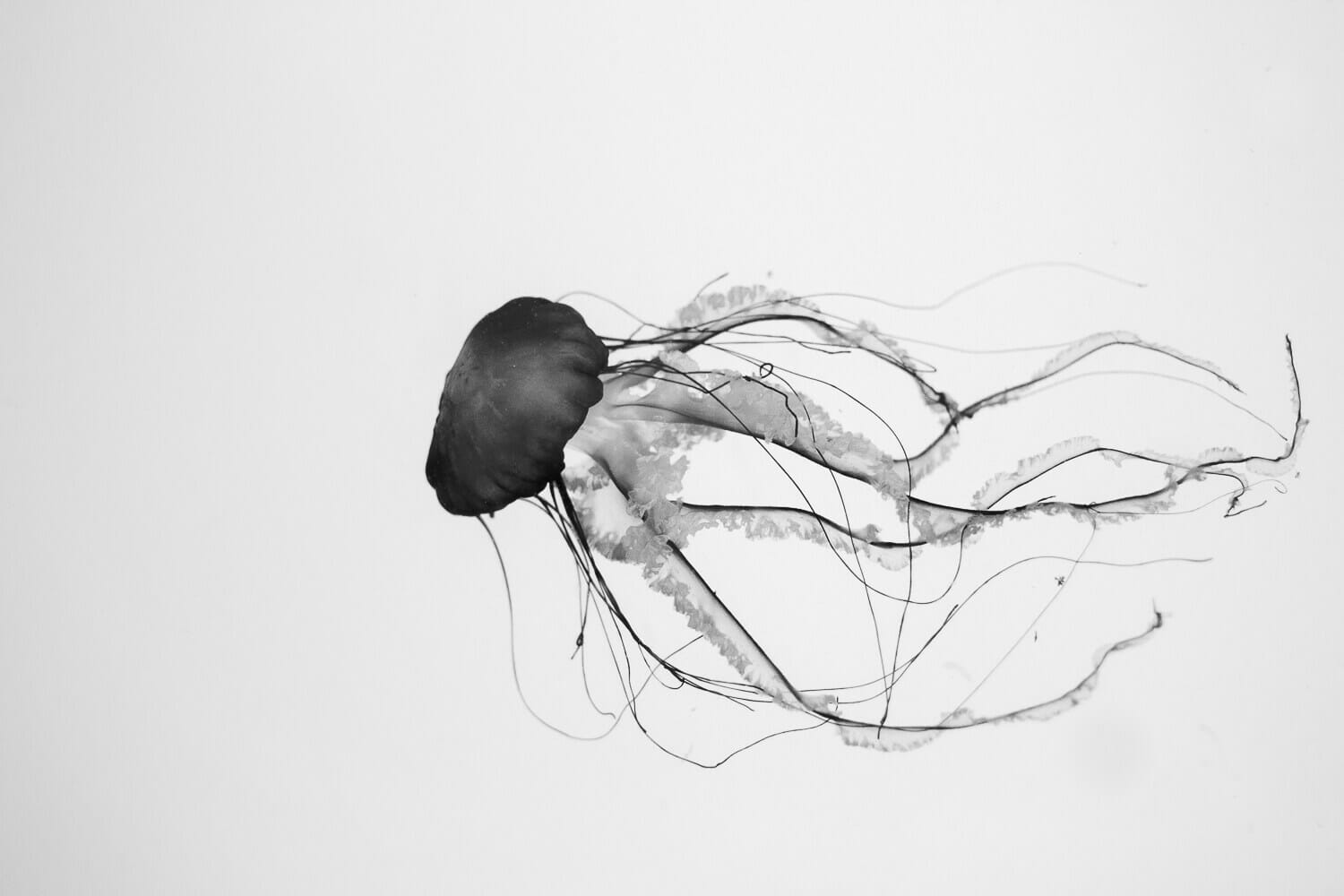
Photo essays are a chance to try new styles or techniques that stretch your skills and creativity. This image was part of an essay exploring simplicity and shape, and helped me learn new skills in black and white post-processing.
How photo essays improve your photography
Creating photo essays is an amazing antidote if you’ve ever felt a lack of direction or purpose in your photography. Photo essays help build your photographic skills in at least 3 important ways.
1. You become more strategic in creating a body of work
It's easy to get stuck in a rut of photographing whatever pops up in front of you. And when you do, you end up with a collection of stand-alone shots.
These singles may work fine as a print, a quick Instagram post, or an addition to your gallery of shots on your website. But amassing a bunch of one-off shots limits your opportunities as a photographer for everything from exhibits to getting your work published.
Building photo essays pushes you to think strategically about what you photograph, why, and how. You're working toward a particular deliverable – a cohesive visual essay – with the images you create.
This elevates your skills in crafting your photo essay, and in how you curate the rest of your work, from galleries on your website to selecting images to sell as prints .
2. You become more purposeful in your composition skills
Composition is so much more than just following the rule of thirds, golden spirals, or thinking about the angle of light in a shot.
Composition is also about thinking ahead in what you’re trying to accomplish with a photograph – from what you’re saying through it to its emotional impact on a viewer – and where it fits within a larger body of work.
Photo essays push you to think critically about each shot – from coming up with fresh compositions for familiar subjects, to devising surprising compositions to fit within a collection, to creating compositions that expand on what’s already in a photo essay.
You’re pushed beyond creating a single pleasing frame, which leads you to shoot more thoughtfully and proactively than ever.
(Here’s a podcast episode on switching from reactive shooting to proactive shooting.)
3. You develop strong editing and curation skills
Selecting which images stay, and which get left behind is one of the hardest jobs on a photographer’s to-do list. Mostly, it’s because of emotional attachment.
You might think it’s an amazing shot because you know the effort that went into capturing it. Or perhaps when you look at it, you get a twinge of the joy or exhilaration you felt the moment you captured it. There’s also the second-guessing that goes into which of two similar images is the best – which will people like more? So you’re tempted to just show both.
Ultimately, great photographers appear all the more skilled because they only show their best work. That in and of itself is a skill they’ve developed through years of ruthlessly editing their own work.
Because the most powerful photo essays only show a handful of extraordinary images, you’re bound to develop the very same critical skill (and look all the more talented because of it).
Photo essays are also a great stepping stone to creating photo stories. If you’re interested in moving beyond stand-alone shots and building stories, shooting photo essays will get your creative brain limbered up and ready for the adventure of photo stories.

A photo essay exploring the natural history of a favorite species is an exciting opportunity for an in-depth study. For me, that was a photo essay on emotive images of the American dipper (Cinclus mexicanus) as it hunts in streams.
9 Simple steps to create your photo essays
1. clarify your theme.
Choose a theme, topic, or concept you want to explore. Spend some time getting crystal clear on what you want to focus on. It helps to write out a few sentences, or even a few paragraphs noting:
- What you want the essay to be about
- What kinds of images you want to create as part of it
- How you’ll photograph the images
- The style, techniques, or gear you might use to create your images
- What “success” looks like when you’re done with your photo essay
You don’t have to stick to what you write down, of course. It can change during the image creation process. But fleshing your idea out on paper goes a long way in clarifying your photo essay theme and how you’ll go about creating it.
2. Create your images
Grab your camera and head outside!
As you’re photographing your essay, allow yourself some freedom to experiment. Try unusual compositions or techniques that are new to you.
Stretch your style a little, or “try on” the style of other photographers you admire who have photographed similar subjects.
Photo essays are wonderful opportunities to push yourself outside of your comfort zone and grow as a photographer.
Remember that a photo essay is a visually cohesive collection of images that make sense together. So, while you might stretch yourself into new terrain as you shoot, try to keep that approach, style, or strategy consistent.
Don’t be afraid to create lots of images. It’s great to have lots to choose from in the editing process, which comes up next.
3. Pull together your wide edit
Once you’ve created your images, pull together all the images that might make the cut. This could be as many as 40-60 images. Include anything you want to consider for the final essay in the wide edit.
From here, start weeding out images that:
- are weaker in composition or subject matter
- stand out like a sore thumb from the rest of the collection
- Are similar to other stronger images in the collection
It's helpful to review the images at thumbnail size. You make more instinctive decisions and can more easily see the body of work as a whole. If an image is strong even at thumbnail size to stand out from similar frames while also partnering well with other images in the collection, that's a good sign it's strong enough for the essay.
4. Post-process your images for a cohesive look
Now it’s time to post-process the images. Use whatever editing software you’re comfortable with to polish your images.
Again, a photo essay has a cohesive visual look. If you use presets, filters, or other tools, use them across all the images.
5. Finalize your selection
It’s time to make the tough decisions. Select only the strongest for your photo essay from your group of images.
Each image should be strong enough to stand on its own and make sense as part of the whole group.
Many photo essays range from 8-12 images. But of course, it varies based on the essay. The number of images you have in your final photo essay is up to you.
Remember, less is more. A photo essay is most powerful when each image deserves to be included.
6. Put your images in a purposeful order
Create a visual flow with your images. Decide which image is first, and build from there. Use compositions, colors, and subject matter to decide which image goes next, then next, then next in the order.
Think of it like music: notes are arranged in a way that builds energy, or slows it down, surprise listeners with a new refrain, or drop into a familiar chorus. How the notes are ordered creates emotional arcs for listeners.
How you order your images is similar.
Think of the experience a viewer will have as they look at one image, then the next, and the next. Order your images so they create the experience you want your audience to have.
7. Get feedback
The best photographers make space for feedback, even when it’s tough to hear. Your work benefits from not just hearing feedback, but listening to it and applying what you learn from it.
Show your photo essay to people who have different sensibilities or tastes. Friends, family members, fellow photographers – anyone you trust to give you honest feedback.
Watch their reactions and hear what they say about what they’re seeing. Use their feedback to guide you in the next step.
8. Refine, revise, and finalize
Let your photo essay marinate for a little while. Take a day or two away from it. Then use your freshened eyes and the feedback you received from the previous step to refine your essay.
Swap out any selects you might want to change and reorder the images if needed.
9. Add captions
Even if you don’t plan on displaying captions with your images, captioning your images is a great practice to get into. It gives context, story, and important information to each image. And, more than likely, you will want to use these captions at some point when you share your photo essay, which we dive into later in this article.
Add captions to the image files using Lightroom, Bridge, or other software programs.
Create a document, such as a Google or Word doc, with captions for each image.
In your captions, share a bit about the story behind the image, or the creation process. Add whatever makes sense to share that provides a greater understanding of the image and its purpose.
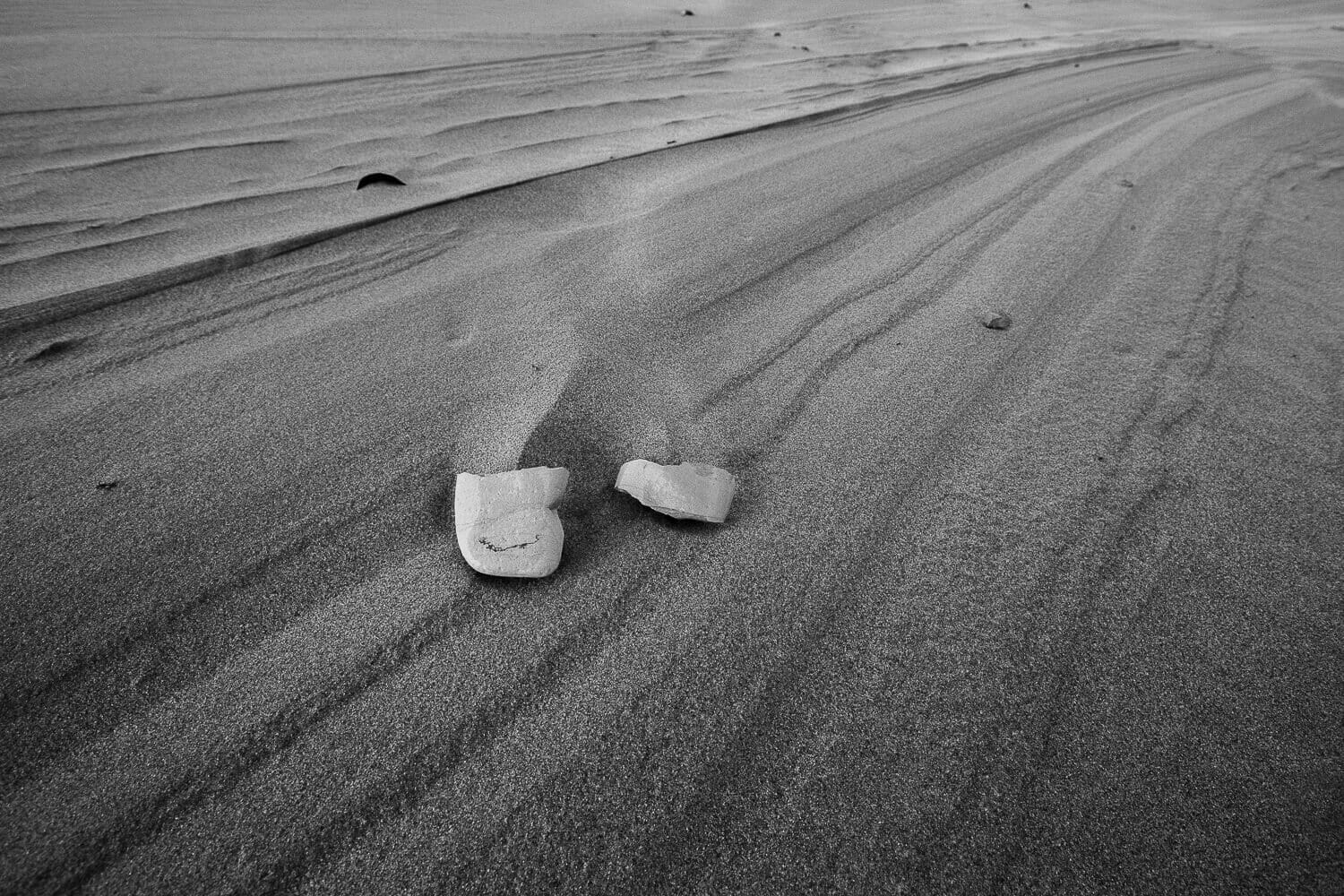
Photo essays allow you to explore deliberate style choices, such as a focus on shapes, patterns, textures, and lines. Since each photo is part of a larger essay, it encourages you to be bold with choices you might not otherwise make.
5 Examples of amazing nature photo essays
1. “how the water shapes us” from the nature conservancy.
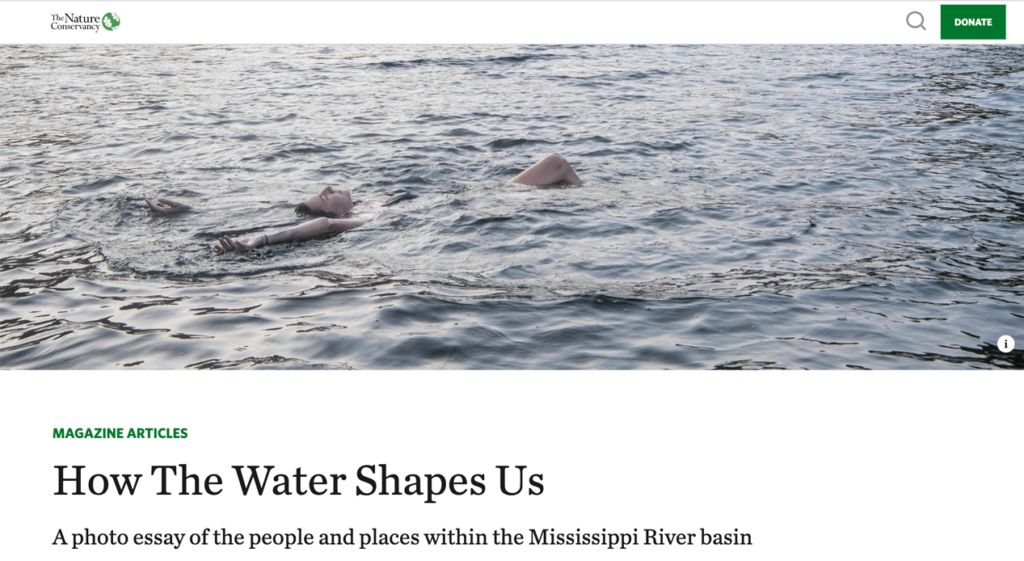
This gorgeous essay, crafted with the work of multiple photographers, explores the people and places within the Mississippi River basin. Through the images, we gain a sense of how the water influences life from the headwater all the way to the Gulf of Mexico. Notice how each photographer is tasked with the same theme, yet approaches it with their own distinct style and vision. It is a wonderful example of the sheer level of visual variety you can have while maintaining a consistent style or theme.
View it here
2. “A Cyclist on the English Landscape” from New York Times’ The World Through A Lens series

This photo essay is a series of self-portraits by travel photographer Roff Smith while “stuck” at home during the pandemic. As he peddled the roads making portraits, the project evolved into a “celebration of traveling at home”. It’s a great example of how visually consistent you can be inside a theme while making each image completely unique.
3. “Vermont, Dressed In Snow” from New York Times’ The World Through A Lens series

This essay by aerial photographer Caleb Kenna uses a very common photo essay theme: snow. Because all images are aerial photographs, there’s a consistency to them. Yet, the compositions are utterly unique from one another. It’s a great example of keeping viewers surprised as they move from one image to the next while still maintaining a clear focus on the theme.
4. “Starling-Studded Skies” from bioGraphic Magazine
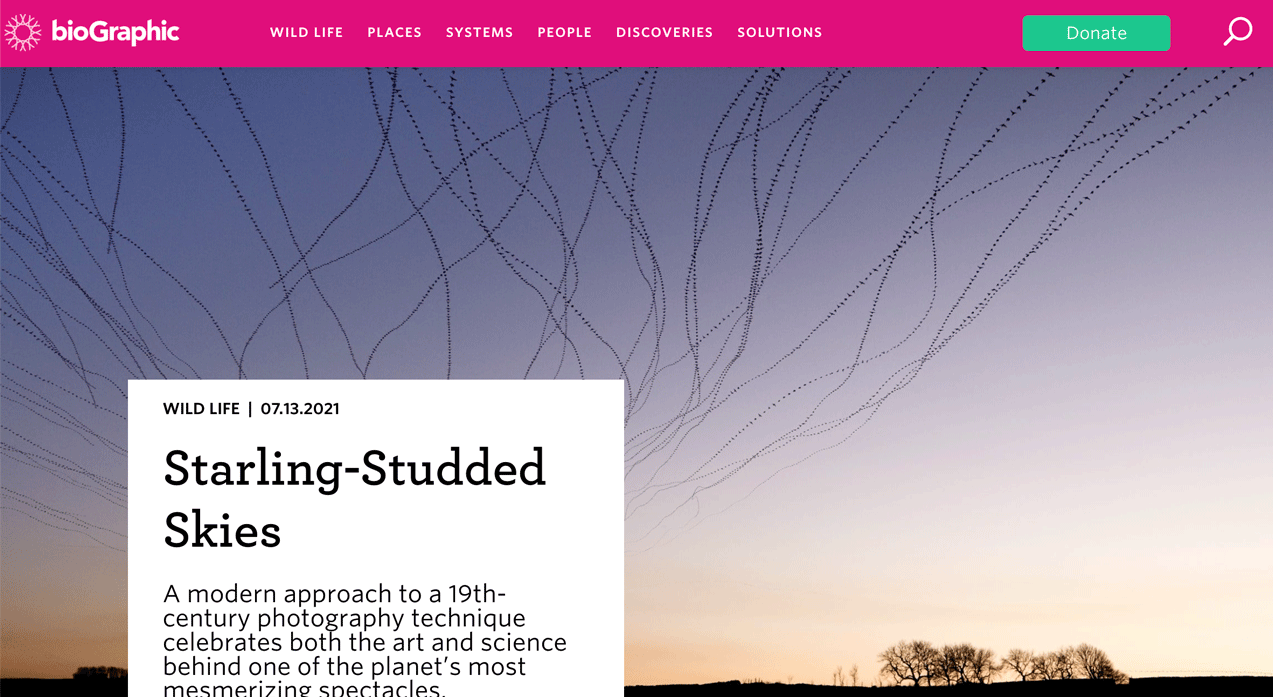
This beautiful essay is by Kathryn Cooper, a physicist trained in bioinformatics, and a talented photographer. She used a 19th century photographic technique, chronophotography, to create images that give us a look at the art and science of starling murmurations. She states: “I’m interested in the transient moments when chaos briefly changes to order, and thousands of individual bodies appear to move as one.” This essay is a great example of deep exploration of a concept using a specific photographic technique.
View it here (Note: must be viewed on desktop)
5. “These Scrappy Photos Capture the Action-Packed World Beneath a Bird Feeder” from Audubon Magazine
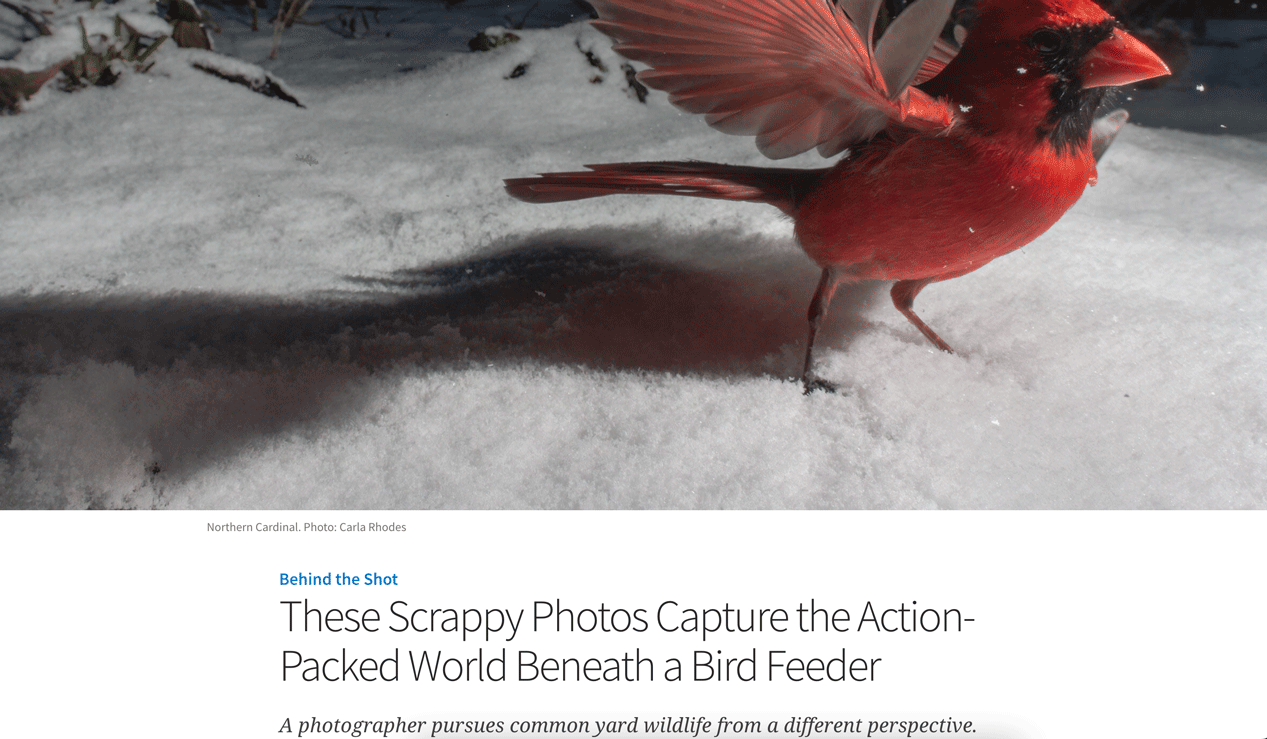
This photo essay from conservation photographer Carla Rhodes explores the wildlife that takes advantage of the bounty of food waiting under bird feeders . Using remote camera photography , Rhodes gives viewers a unique ground-level perspective and captures moments that make us feel like we’re in conversation with friends in the Hundred Acre Woods. This essay is a great example of how perspective, personality, and chance can all come into play as you explore both an idea and a technique.
25 Ideas for creative photo essays you can make
The possibilities for photo essays are truly endless – from the concepts you explore to the techniques you use and styles you apply.
Choose an idea, hone your unique perspective on it, then start applying the 9 simple steps from above.
- The life of a plant or animal (your favorite species, a species living in your yard, etc)
- The many shapes of a single species (a tree species, a bird species, etc)
- How a place changes over time
- The various moods of a place
- A conservation issue you care about
- Math in nature
- Urban nature
- Seasonal changes
- Your yard as a space for nature
- Shifting climate and its impacts
- Human impacts on environments
- Elements: Water, wind, fire, earth
- Day in the life (of a person, a place, a stream, a tree…)
- Outdoor recreation (birding, kayaking, hiking, naturalist journaling…)
- Wildlife rehabilitation
- Lunar cycles
- Sunlight and shadows
- Your local watershed
- Coexistence

As you zero in on a photo essay theme, consider two things: what most excites you about an idea, and what about it pushes you out of your comfort zone. The heady mix of joy and challenge will ensure you stick with it.
Your photo essay is ready for the world! Decide how you’d like to make an impact with your work. You might use one or several of the options below.
1. Share it on your website
Create a gallery or a scrollytelling page on your website. This is a great way to drive traffic to your website where people can peruse your photo essay and the rest of the photography you have.
Putting it on your website and optimizing your images for SEO helps you build organic traffic and potentially be discovered by a broader audience, including photo editors.
2. Create a scrollytelling web page
If you enjoy the experience of immersive visual experiences, consider making one using your essay. And no, you don’t have to be a whiz at code to make it happen.
Shorthand helps you build web pages with scrollytelling techniques that make a big impression on viewers. Their free plan allows you to publish 3 essays or stories.
3. Create a Medium post
If you don’t have a website and want to keep things simple, a post on Medium is a great option.
Though it’s known for being a platform for bloggers, it’s also possible to add images to a post for a simple scroll.
And, because readers can discover and share posts, it’s a good place for your photos to get the attention of people who might not otherwise come across it.
4. Share it on Instagram
Instagram has changed a lot over the last couple of years, but it’s still a place for photographers to share their work thoughtfully.
There are at least 3 great ways to share your photo essay on the platform.
– Create a single post for each image. Add a caption. Publish one post per day until the full essay is on your feed. Share each post via Instagram Stories to bring more attention and interaction to your photo essay.
– Create a carousel post. You can add up 10 photos to a carousel post, so you may need to create two of them for your full photo essay. Or you might create a series of carousel posts using 3-4 images in each.
– Create a Reel featuring your images as a video. The algorithm heavily favors reels, so turning your photo essay into a video experience can get it out to a larger audience.
I ran a “create a reel” challenge in my membership community. One member created a reel with her still images around a serious conservation issue. It gathered a ton of attention and landed her opportunities to share her message through YouTube and podcast interviews and publishing opportunities. Watch it here.
5. Exhibit it locally
Reach out to local galleries, cafes, pubs, or even the public library to see if they’re interested in hanging your photo essay for display. Many local businesses and organizations happily support the work of local artists.
6. Pitch your photo essay to publications
One of the best ways to reach an audience with your work is to get it published. Find publications that are a great fit for the theme and style of your photo essay, then pitch your essay for consideration. You gain a fantastic opportunity to share your work widely and can earn a paycheck at the same time.
Remember that if you want to get your photo essay published, you may want to hold back from sharing it publicly before you pitch it to publications.
PIN THIS FOR LATER
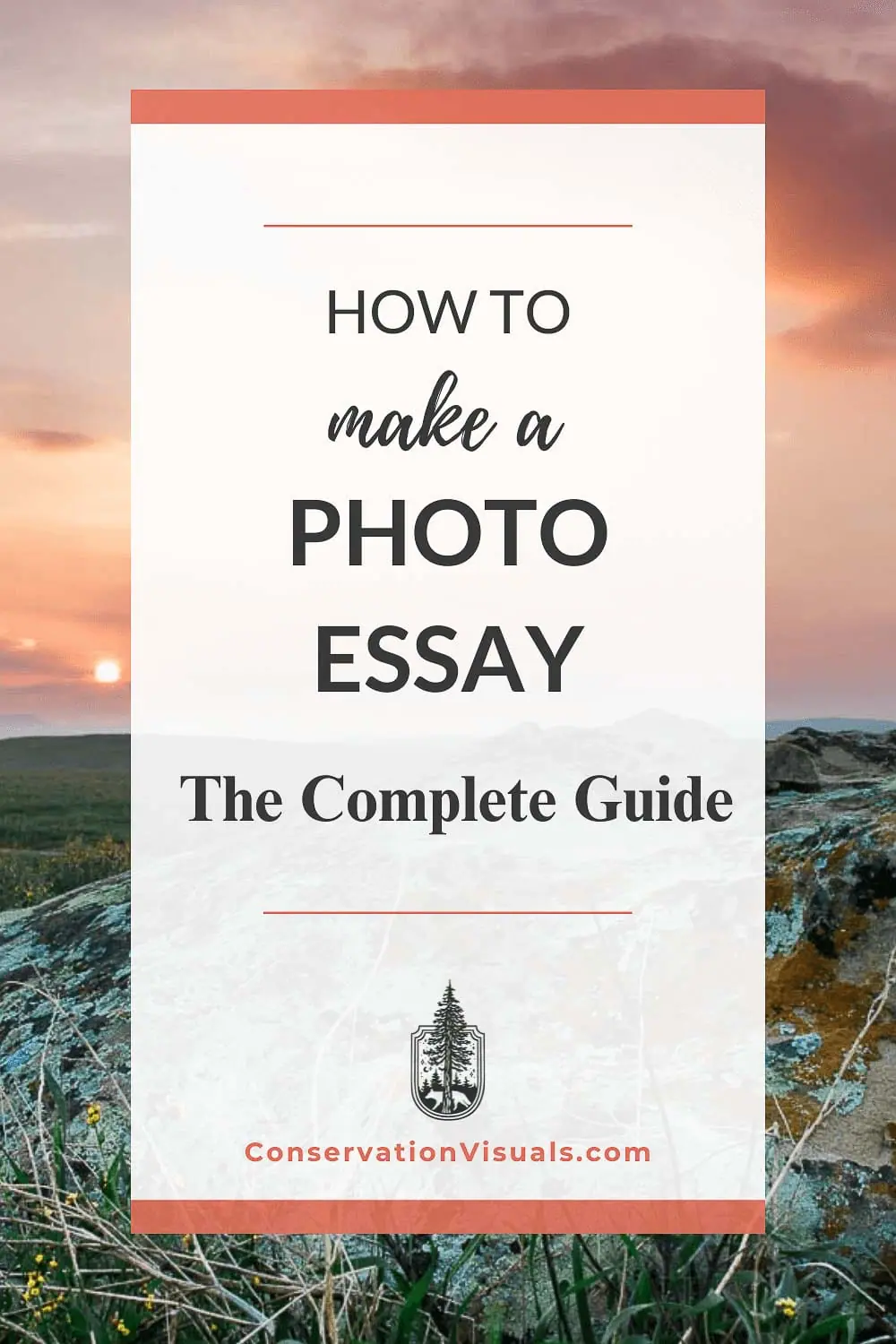
Jaymi Heimbuch
Next up….

7 Best Ways to Sell Nature Photos Online (2024)
Photography Business , Tutorials
Discover the top 7 strategies for selling your stunning nature photos online. Learn how to sell your photos and reach a wider audience.

Camera Lens Hoods: When & How to Use Them for Better Photos
Photo Accessories , Gear , How to Use Photo Gear
Get better photos with camera lens hoods. Learn what it is, when to use it (or ditch it), and why it’s essential for nature photographers.

Sunset Photography: 9 Easy Tips for Better Golden Hour Photos
Landscape Photography , Tutorials
Learn how to improve your photos at sunset (and sunrise!) with this expert advice. Simple and effective techniques you can start using today.
WHAT DO YOU WANT TO READ TODAY?
POPULAR SEARCHES: Best Cameras | Location Guide | Best Lenses | Wildlife
Take The Quiz
Get super clear on exactly what to focus on right now to grow your photography skills fast..
Take the FREE Full Frame Ecosystem Assessment ™ to crack the code on your roadblocks so you can hop into the creativity express lane with personalized action steps!
Ready to level up your awesome?
Start your next learning adventure.

52 Week Creativity Kit
A year of weekly bite-sized nature photography concepts and challenges that strengthen your camera skills and provide endless inspiration.

6 Must-Have Shots for a Photo Story
New to photo stories? Start by learning how to create a powerful photo story with the 6 essential images that all photo editors want to publish.

Photo Stories for Nature
Master how to photograph impressive photo stories and effectively share them so they make an impact.

Conservation Filmmaking 101
Master how to craft powerfully moving films that create conservation impact.
Get The Most Popular Free Resources
Make leaps forward in your visual storytelling download three of our most valuable free resources for photographers..

Ready to take better photos?
Get all the good things delivered.
Photography how-to guides, expert interviews, behind-the-scenes insights & more all delivered to your inbox weekly.
Privacy Overview
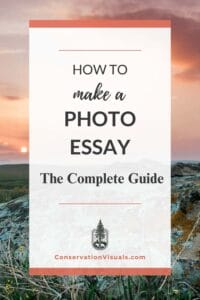
News from the Columbia Climate School
A Photo Essay Celebrating Africa’s Precious Biodiversity
By Brighton Kaoma, Columbia University MPA Alum; Victor Nyambok, WWF Regional Office for Africa Communications Manager, and Alice Ruhweza, Africa Regional Head, WWF
The food we eat, the air we breathe, the water we drink and the climate that makes our planet habitable all come from nature. During these exceptional times, nature is sending us a message: to care for ourselves, we must care for nature. It’s time to wake up. To take notice. To raise our voices. It’s time to build back better for people and the planet.
Africa is immensely rich in biodiversity . Its living organisms comprise around a quarter of global biodiversity and it supports the Earth’s largest intact assemblages of large mammals, which roam freely in many countries. Africa’s biomes extend from mangroves to deserts, from Mediterranean to tropical forests, from temperate to sub-tropical and montane grasslands and savannas, and even to ice-capped mountains.
Today on World Environment Day, we are pleased to share with you some of Africa’s unique Biodiversity.

While we may be apart, today on World Environment Day our voices will join as one.
It’s time to appreciate the benefits that nature provides. It’s time to take action to protect & restore our natural world. This World Environment Day, it’s #TimeForNature.

Related Posts

Celebrate over 50 years of Earth Day with us all month long! Visit our Earth Day website for ideas, resources, and inspiration.
Get the Columbia Climate School Newsletter →
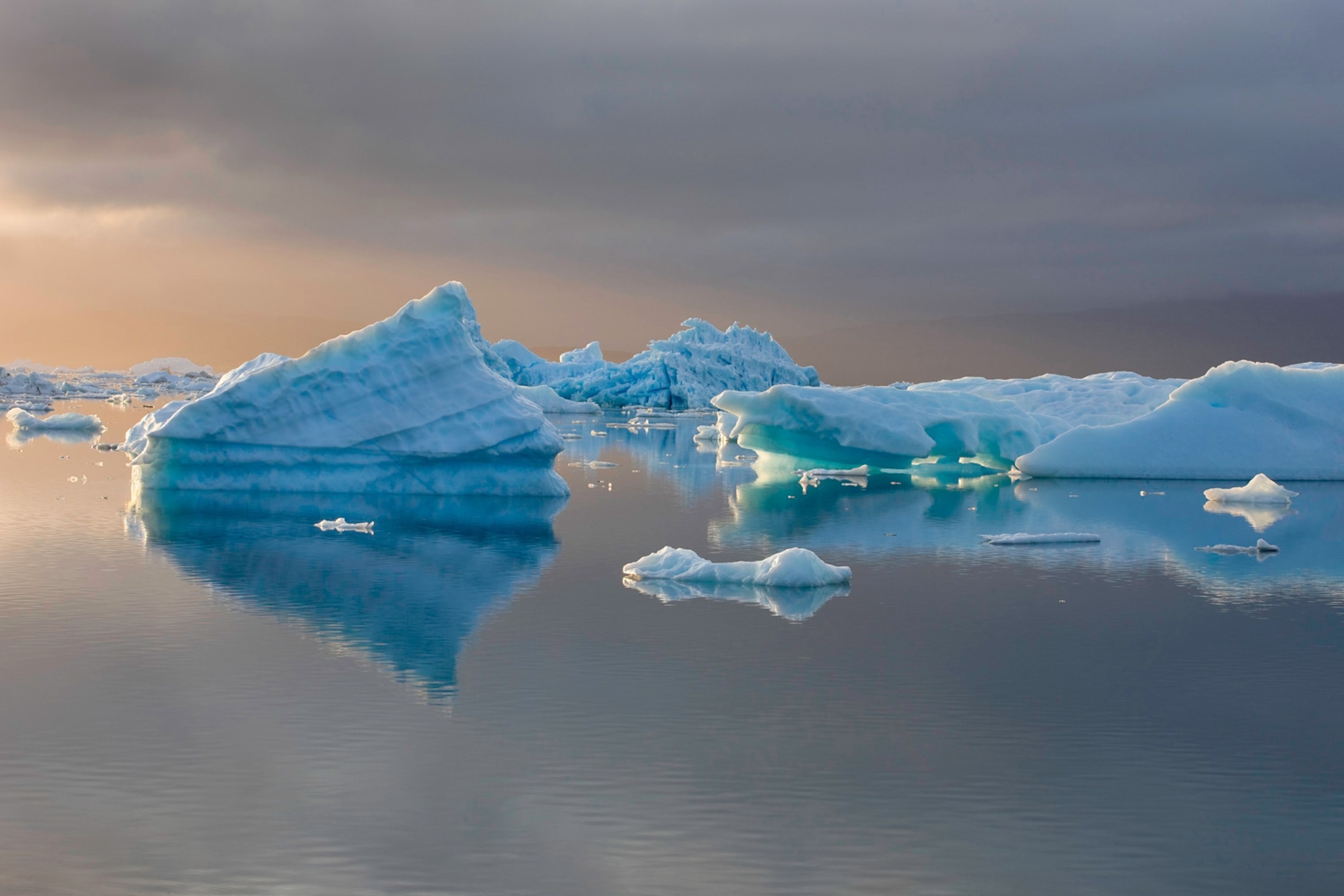
- PHOTOGRAPHY
Peter Essick’s Journey into Environmental Photojournalism
As both a picture and environment editor at National Geographic I live a hybrid life. On one hand I try to imagine how we can visualize—in fresh and compelling ways—the goings-on in our world for the stories we publish. On the other hand I’m deeply involved in conceiving and helping create many of our projects about global environmental change. I thrive where these two spheres intersect.
This intersection might best be described as “environmental photojournalism”—a combination of documentary photojournalism and environmental journalism. It’s a two-fold discipline inspired and informed by scientists who study patterns of change on our planet, largely brought about by humanity’s expanding presence. It also encompasses the finest traditions of world-class documentary photography—trying to eloquently make visual sense of our world so readers can better understand how to find their own place in it.

Among the most memorable environmental photojournalism projects I’ve been involved with have been collaborations with photographer Peter Essick. We first teamed up nearly 20 years ago on a project about non-point source water pollution —the kind that flows into rivers, bays, and the sea from fertilized lawns, farms, paved highways, and parking lots. This diffuse runoff pollution contributes to “hypoxic” or dead zones like those we find in the Chesapeake Bay, and the Gulf of Mexico near the Mississippi River delta.
Since that first story, Peter and I have traveled the road of environmental photojournalism together, teaming on 14 stories with subjects as diverse as nuclear waste, paleoclimatology, America’s wilderness, and the chemical pollution cocktail we each carry inside us . We collaborated on a 74-page climate change project in September 2004, and in 2010 we explored Greenland as it “greens up” in the face of rising global temperatures.

In 2009 Peter created a powerful photo essay on the impact of tar (or oil) sands mining in Alberta , and he recently photographed a beautiful black and white essay on the Ansel Adams Wilderness of California . He is incredibly versatile.
FREE BONUS ISSUE
Peter has just released a new book called “Our Beautiful, Fragile World” —a retrospective of his 25 years as a photographer who’s been deeply engrossed in documenting the resilience of the natural world at the nexus of increasing encroachment and impact from expanding human activity.

I recently interviewed Peter about his origins and trajectory as an environmental photographer:
DENNIS DIMICK: You were a business major in college, then went to graduate school at Missouri for photojournalism. How did you get interested in photography?
PETER ESSICK: My father was a science teacher and a lover of the outdoors. We went on a lot of trips, hiking, skiing, river rafting when I was growing up and he always took pictures with his trusty Nikon F to show his classes. So my father taught me how to use a camera, but it wasn’t until I took a photography class in high school that I really fell in love with the medium.

DENNIS: Who are your inspirations? Photographically? Environmentally?
PETER: Ansel Adams was my biggest inspiration starting out. I learned much of what I still know from his Basic Photo series. I also liked Eliot Porter for his color work. I admire many contemporary photographers who are pushing boundaries in the digital era. However, I still find myself drawn to photographs that are timeless, and the understated work of photographers like Robert Adams or Atget.
My father used to quote John Muir a lot. I inherited a complete set of Muir’s writings from him, and I have read many of the classic thinkers on wilderness, from Aldo Leopold to Edward Abbey. Finding Beauty in a Broken World by Terry Tempest Williams is sort of my guiding light for what a good environmental photograph should be.

DENNIS: People are always interested in finding out how photographers are able to get assignments from National Geographic . How did you make your connection?
PETER: When I was at the University of Missouri I was selected as a summer intern based on a portfolio I had submitted. It was how I got my foot in the door and I am still very thankful that National Geographic gave me that opportunity. It was truly life changing in every way.
DENNIS: Was there an event or situation that caused you to focus on environmental issues?
PETER: The assignment I did for a National Geographic special issue on water in 1993 was my first exposure to photographing an important environmental issue. I found I liked the intellectual challenge and the work seemed worthwhile beyond just the artistic value.

DENNIS: What have been your favorite or most rewarding projects?
You May Also Like

Nat Geo's most compelling images of the 21st century (so far)
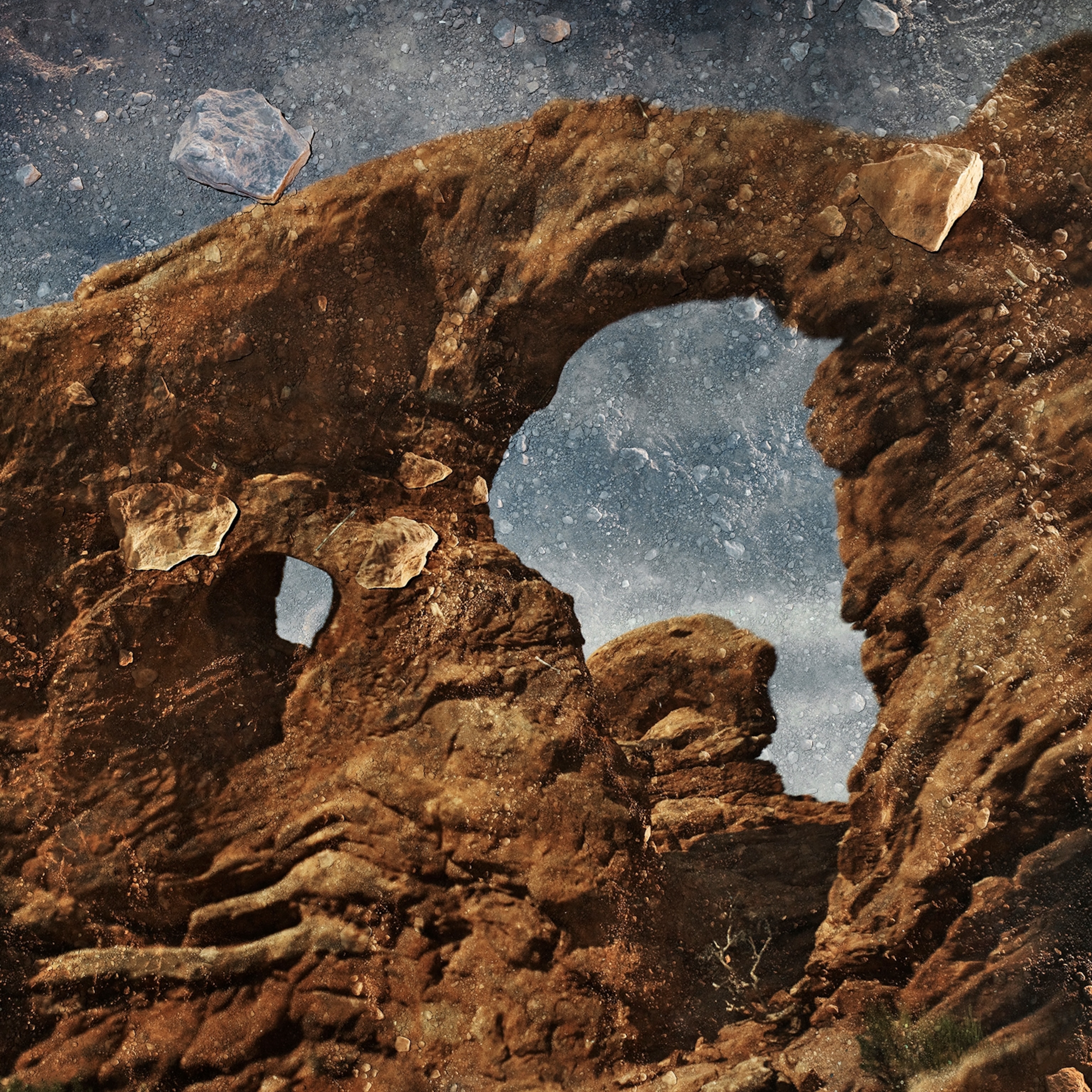
Conversation With Abelardo Morell and Peter Essick

How much does your name influence your future? The data may surprise you.
PETER: My favorite place of any that I have visited is Patagonia in the southern part of Argentina and Chile. The high desert, blue lakes, dramatic peaks of the Andes and the amazing clouds and weather are all a dream for a landscape photographer. The gauchos are also great subjects. Close runner-ups would be the Ansel Adams Wilderness, California, and Yoho National Park, British Columbia.
Overall, the most rewarding story I have done is about climate change in 2004. That is one I can look back on and feel good that I was able to do that story. It was a once-in-a-lifetime opportunity. As Yogi Berra would say, those don’t come along too often.

“My best motivation to do environmental stories is when I see children like the boy looking out the window in Butte and wonder about the world we are leaving for them.” —Peter Essick
DENNIS: How about most challenging? The first project you and I did together was on non-point source water pollution, and just this year you took a new look at the impacts of fertilizer —an important aspect in the original story. We also did a project on “toxic people” —or the chemical pollution inside us, and then there was nuclear waste. None of those projects were easy, right?
PETER: In general, environmental stories are more difficult than landscape stories because of problems getting access to sites and finding people who will agree to be photographed. On the positive side, I found it exciting to work on a story like non-point source water pollution because it had never been done before and there were no other past stories to live up to. Stories on pollution or waste I find fascinating for the dystopian elements, and they usually have visual potential, too.

DENNIS: What did you learn about yourself and your work while editing this book and reviewing the photographs?
PETER: I feel I have a unique story to tell with this book. When I have been able to break through all the noise to try to be heard, I have been getting a good response. The combination of a photojournalist and environmentalist seems like a logical one, but it really isn’t all that common. I learned how to write about my photographs doing this book.
I often walk up Stone Mountain near my home in Georgia for exercise, and I found I got a lot of ideas while walking up and down the trail.

“Many of my successful photographs are the result of discovering a scene and then going back several times to get the best picture possible. This photograph is the result of having an idea and then executing it despite the obstacles.” —Peter Essick
DENNIS: What do you tell young photographers who come to you interested in pursuing the kind of work you have done?
PETER: Many people contact me saying they are interested in becoming a National Geographic photographer and I have taught many workshops on nature photography. However, very few young photographers seem as interested in doing environmental stories. I feel going forward we will need more photographers doing this work, and that is one of the reasons that I produced this book.
DENNIS: What kinds of projects would you like to do that you have not had a chance to pursue? Or put another way, what’s next for Peter?
PETER: This book and one coming out in the spring on the Ansel Adams Wilderness have opened up a lot of opportunities for me. I am doing lots of lectures, workshops, some exhibits. And I’m planning to keep making new nature and environmental photographs. I recently bought an Ebony view camera and have been using it to make 4×5 collodion wet plates. The images seem to have a lot of potential to evoke a passage of time that is unique to the process. In many ways, it feels like now I am reaching back to look forward.
Peter Essick’s new book, “Our Beautiful, Fragile World” is published by Rocky Nook Books. See more work on his website and follow him on Twitter and Instagram .
Dennis Dimick can be found on Flickr , Twitter , and Instagram .
Related Topics
- PHOTOJOURNALISM
- ENVIRONMENT AND CONSERVATION

Why it’s important to tell stories that inspire action, not despair

A strike threatened to cripple Hollywood in 1960. Here's how they resolved it.

The window into Leonardo da Vinci's creativity? His sketchbooks

The most dangerous job on Earth? Inside the world of underwater welders

The 5 'Blue Zones' where the world’s healthiest people live
- History & Culture
- Environment
- Paid Content
History & Culture
- History Magazine
- Mind, Body, Wonder
- Terms of Use
- Privacy Policy
- Your US State Privacy Rights
- Children's Online Privacy Policy
- Interest-Based Ads
- About Nielsen Measurement
- Do Not Sell or Share My Personal Information
- Nat Geo Home
- Attend a Live Event
- Book a Trip
- Inspire Your Kids
- Shop Nat Geo
- Visit the D.C. Museum
- Learn About Our Impact
- Support Our Mission
- Advertise With Us
- Customer Service
- Renew Subscription
- Manage Your Subscription
- Work at Nat Geo
- Sign Up for Our Newsletters
- Contribute to Protect the Planet
Copyright © 1996-2015 National Geographic Society Copyright © 2015-2024 National Geographic Partners, LLC. All rights reserved
How to create a photo essay
By Marissa Sapega

According to LDV Capital, there will be 45 billion cameras in the world by 2022 . The proliferation of smartphones with hi-res cameras — coupled with our obsession with documenting the mundane on social media — has led to a glut of images shared on the web .
We're talking 3.2 billion images shared online every single day.
A decade ago, observers were predicting that this would spell the end of professional photography. But as we all know from our Instagram feeds, the need for professional photography — properly produced, contextualised, and published — has never been greater.
With the emergence of next generation digital publishing platforms, we're seeing a new era for photographic essays. Many of the most powerful examples are from journalism, where immersive photos are transforming long-form journalism into a more dynamic and interactive experience.
But powerful photos — coupled with immersive, interactive digital storytelling techniques — are being increasingly incorporated in marketing and communications across multiple industries, from brands to nonprofits.
In this guide, we'll cover:
- The main types of photo essays
- The new era of photo essays
- Tips for making thoughtful and powerful photo essays
- How to make a compelling photo essay
- We'll also provide a range of photo essay examples as we go
If you're looking for more examples, check out our roundup of photo essay examples .
Let's dive in!
What do the BBC, Tripadvisor, and Penguin have in common? They craft stunning, interactive web content with Shorthand. And so can you! Publish your first story for free — no code or web design skills required. Sign up now.
Types of photo essays
There are two primary types of photo essays: thematic and narrative.
Thematic photo essays
Thematic essays focus on a topical story (like a natural disaster). One example of a great thematic essay comes from NBC News Olympics photos: Emotion runs high .
This piece encapsulates the overall gloom of the 2021 Tokyo Olympics — through a series of powerful behind-the-scenes photographs of athletes in varying levels of distress — but does not focus on a particular subject.

Another example of a great photo story comes from the BBC. In “ From Trayvon Martin to Colin Kaepernick , they tell the story of how Black Lives Matter became entwined with sports.

Narrative photo essays
Narrative photo essays take the story a step further and tell a specific story through images.
One striking example is SBS's 28 Days in Afghanistan . This narrative essay documents photojournalist Andrew Quilty's time in the war-ravaged nation through stark photographs and supplementary text.

What is a photo essay in 2023?
A traditional photo essay aims to replace the written word with photographs. Done poorly, it is nothing more than series of images lumped together. Done well, though, the photojournalist or artist takes the reader on an engaging journey.
The main difference between photo essays of yore and photo essays in 2023 is the sophistication of digital publishing. With the rise of digital storytelling platforms, we're seeing a rise in truly interactive and immersive digital photo essays.
Today, many digital photo essays include quotes and text to supplement the visuals and are formatted using interactive scrollytelling techniques. Scrollytelling is a form of visual storytelling that leverages user engagement (scrolling) to reveal images and text in an interesting and dynamic way. The interactivity compels the viewer to continue consuming the content, and creators have a wide latitude when designing the overall effect.
Given the benefits of a more dynamic and interactive form of photo essays, it’s easy to see why they have become so popular in recent years. But as with any photo essay, creating an exceptional digital photo essays requires planning, structure, and know-how.
Let's take a closer look with ten tips for great photo essays.
Looking to learn more about interactive visual storytelling? Check out our guide, 8 tips for powerful visual storytelling .
10 tips for great photo essays

1. Create visual structure
An authentic photo essay requires visual markers to help transform a collection of images into a narrative. For example, photo chapter headings in Growing up young introduce each new girl in the story.
Similarly, in SBS’s photojournalism story — 28 days in Afghanistan , mentioned above — each dated header delineates a part of the story, providing an easy-to-follow chronological structure and pace.
Daniel Boud intersperses his own thoughts in between a haunting series of photographs of the iconic Sydney Opera House as it underwent a restoration during the early days of the Covid-19 pandemic in The Sydney Opera House at Rest .
Text can add depth to the photo essay—but take care where you add it. It should support and enhance the final product, not overshadow it.

2. Make it interactive
In 2023, the best photo essays are interactive.
One great example of an interactive photo essay is WaterAid’s essay, Water and Climate . This photo essay highlights the people climate change has impacted most brutally, including a video, stark close-up photography, and graphics to get its point across.
The photo essay uses minimal text, preferring to allow the images to speak for themselves. As a user scrolls, it exposes them to more content. Each visual and supplemental text further immerses the viewer into the story until the end, where they encounter a call to action to join WaterAid in helping those in need.
Nonprofits like WaterAid often use interactive photo essays to compel people to act , because they work. Half the battle of convincing someone to part with their money is creating an emotional connection with them—something a photo essay does particularly well.

3. Produce more content than you need
Have you ever seen how much film footage ends up on the cutting room floor for the average movie (known as the shooting ratio)? It’s a lot.
Why is this? First, filmmakers know that many of the shots they take will be either poor-quality or simply not up to their exacting standards. Second, if a director included all the footage they took throughout the entire production in the final product, her movie would be a bloated mess.
The editor’s job is to strip away the dead weight to reveal a clean, refined, final product that keeps viewers raptly engaged. However, an editor may struggle to do his job if the director has not provided enough usable footage.
The same principles apply to creating an exceptional photo essay. Always assemble more visuals and content than you think you’ll need so you can use the cream of the crop for the final product. Shedding content may be difficult, but it’s necessary, so be prepared to edit your piece without mercy.
Publishing photos on the web, but confused about the range of file formats? Check out our guide to file formats .
4. Use only the best photos
A photo essay is not an excuse to throw together all the imagery you have. Just like any good story, it needs a focused and compelling narrative that keeps things connected. Each image needs to bring something to the table.
Remember that photo quality plays a significant role in the overall caliber of a photo essay. If your iPhone isn’t doing your subject justice, don’t be afraid to pull in a professional to make your work come alive.
A great example of this comes from Sky Sports. In their photo essay, Pictured: Diego Maradona , they had to be ruthless when deciding upon the imagery to include.

They no doubt had hundreds — perhaps thousands — of photos to choose from from the many photo shoots in Maradona's life. Yet they knew that each one had to be poignant and compelling in its own way.
5. Don’t be afraid to edit your photos
Not everyone can be Ansel Adams or Annie Leibovitz. Happily, with the readily available photo-editing software like Photoshop and high-quality cameras on every smartphone, you don’t need to be. Do your best to acquire top-quality photos, but don’t be timid about improving them!
Thanks to heavy exposure to advertising, viewers today now expect doctored images. Whether you’re refining a photo for a flawless finish or adding a touch of grittiness, use this expectation to your advantage. Dial up the contrast, crop out unnecessary elements, and use filters if they suit your needs.
6. Visit the archives
With so many gleaming, airbrushed-to-perfection photographs online today, exposure to imagery that’s not polished within an inch of its life can be a refreshing change.
For example, take a look at Mancity’s My Debut Trevor Francis (v Stoke 1981) , which exclusively uses archival images. Not only was this a necessity (the focus was on a decades-old football match), but it lent the entire piece a tattered legitimacy. You wouldn’t expect “Insta-worthy” images because that’s not the experience the author is trying to convey.

7. Storyboard before building
You wouldn’t build a house without drafting a blueprint, would you? (Well, not unless you weren’t too invested in the end-product.) Much like a blueprint, a storyboard helps you convert the vision inside your head into a concrete plan for construction. It can also contribute to your shot list for your photography project.
Storyboarding forces you to take a step back and evaluate how each element fits into the larger narrative. You may find that half your content is no longer necessary, and that’s okay. It may seem like a barrier to “getting to the fun part” of adding fancy flourishes and creative details, but it’s a critical step for building a good photo essay that genuinely influences viewers.
8. Experiment!
While there are certainly best practices to follow when creating a photo essay, no “one true path” will culminate in perfection every time. Photo essays are a way to express a story; such art is not limited to a template or cookie-cutter outputs.
So, mix it up! Test out different photos, filter effects, text, quotes, and visuals. Pretend you’re playing with a Rubik’s cube when you’re storyboarding and shuffle the content around with abandon. There is no right way to draft a photo essay, and you’ll never settle on one that you believe best conveys your story without a bit of experimentation. (Of course, your first iteration may end up being your best, but at least this way you won’t have any doubts.)
9. Combine data and maps
Adding hard metrics and maps to a photo essay can help support a narrative in ways that photographs can’t. In this essay on segregation in Detroit , NBC included interactive maps of the city that underscored the severity of Detroit’s redlining policy.
These maps drive home this multimedia photo essay’s primary takeaway: Detroit’s enforced segregation has resulted in almost a century of lower quality of life for its black residents.
10. Get inspired
No matter how compelling the vision in your head is, you can still benefit from a little inspiration. If you're looking for photo essay ideas, consider:
- Focusing on a single subject for a day (known as a day in the life photo essay).
- Document local events, such as art shows, protests, or community gatherings — this is an endless source of photo essay topics.
- Capture social issues from your local area.
- Start a photo series, in which you document the same specific subject over a period of time.
- Research the great photo essayists from history, such as W. Eugene Smith, and James Nachtwey.
- Dive into the archives of the great photo essay magazines, such as National Geographic and Life Magazine.
- Do some research on your potential subject. This will help you formulate different angles from which to approach your photo essay.
- Sign up to Shorthand's newsletter , which rounds up the best visual stories on the web every other week.
Now, let's dive into how to make a stunning photo essay using Shorthand.
How to make a stunning digital photo essay
Traditionally, photo essays on the web were little more than a series of images pasted into a blog post. Because most blogs are structured primarily for words, these photos essays didn't do justice to their source media.
However, as web browsers became more powerful and bandwidth increased, a range of content platforms — including no-code digital storytelling platforms like Shorthand — have evolved to make it easier to create stunning visual stories. We've linked to many of these in this guide.
In this section, we're going to run through how to make a photo essay using Shorthand. If you're not a Shorthand customer, you can sign up here and follow along.
1. Create a new story
In your Shorthand dashboard, click 'New Story.' If you'd like, you can choose from any of our templates to help you get started. For now, though, we're going to start with a blank canvas.

The template chooser
2. Add your title image
Every photo essay needs a stunning title image to hook the reader. Depending on what kind of photo essay you're creating, this could be a photo of the subject or theme of the piece. You can also choose to add a title, subtitle, and author.

3. Add a text section
Every photo essay needs a written introduction, to help contextualise the images that follow. Simply click 'New Section' and 'Text', before pasting in your introductory copy.

Adding a Text section.
4. Add your first photo
Now it's time to add the first photo in your essay. Simply click 'New Section' and 'Media.' In photo essays, hierarchy is critical, so make sure you've thought about which photo is most appropriate at the top of your essay. In Shorthand, your photo will appear in all its full-screen glory.

Image in a 'Media' section.
5. Add a Reveal section
You also have the option of adding a 'Reveal' section, which allows you to add text that floats over your images. This text can act as a commentary or de facto caption for each photo in your essay.
Simply click 'New Section' and 'Reveal.' You'll be able to also upload a version of the image for mobile, and set focus areas to make sure the most important parts of your image are shown.

A 'Reveal' section with accompanying text box.
6. Add transition effects
Depending on the nature of your photo essay, you may wish to add transition effects between some images. A ‘Reveal’ section is the best way to achieve this. You'll have the option of choosing from several types of transitions that occur as your reader scrolls from one full-screen image to the next, and each image can have its own text box, too.
Testing a Reveal section in the Shorthand editor
7. Add Scrollmation effects
If you want to use images in concert with large amounts of text, then consider using Shorthand's Scrollmation feature. This allows you to transition through a range of images as the reader scrolls down a column of text.
To do this — you guessed it — simply click 'New Section' and 'Scrollmation' or 'Background Scrollmation.'
The difference between the two is simple: In a Scrollmation section, the text appears in a column beside your images, while in a Background Scrollmation section, images fill the screen and the text column appears over the images. A sequence of related images can give the effect of animation triggered by the reader’s scrolling.
A Scrollmation section within the editor
Background Scrollmation in the editor
8. Add a Media Gallery
If you have many different images, and want to create a mosaic effect in your essay, then you can use a media gallery. To do this, simply click 'New Section' and 'Media Gallery.'
You can then upload your images, and experiment with their size and arrangement to achieve your intended effect.

Creating a Media Gallery section in the editor
9. Preview your story
Photo essays — more than many other genres of content on the web — can run into problems with different screen sizes. Before you publish, make sure you test your story using Shorthand's preview option.
You'll be able to see what your story looks like on desktop, mobile, and tablet viewports, and make adjustments as needed. You can also share your preview link with collaborators, and get pre-publication feedback and quality-assurance.

Story previews in the editor, simulating a phone and iPad.
10. Publish 🚀
The final step is to publish your essay to the world! You now have an immersive, potentially interactive photo essay — without writing a line of code.
Contemporary photo essays are creative endeavours rife with opportunities for interactivity. Organisations and artists alike use them as modern, impactful vehicles to convey powerful stories. Try creating one for yourself using Shorthand for free today!
Publish your first story free with Shorthand
Craft sumptuous content at speed. No code required.
How to Make a Photo Essay: 5 Tips for Impactful Results
A Post By: Christina N Dickson

Want to tell meaningful stories with your photos? That’s what a photo essay is all about: conveying concepts and narratives through a series of carefully chosen images.
While telling a story with photos can be a daunting task, there are several easy tips and techniques you can use in your photo essays to create striking, stunning, eye-opening results.
And that’s what I’m going to share in this article: five photo essay tips that you can immediately apply to your photography. You’ll leave as a better photo essayist than when you arrived!
Let’s get started.
What is a photo essay?
A photo essay is a collection of images placed in a specific order to convey certain emotions , specific concepts, or a progression of events.
In other words:
The photo essay tells stories just like a normal piece of writing , except with images instead of words. (Here, I’m using the term “story” loosely; as mentioned above, photo essays can encapsulate emotions or concepts in addition to traditional, time-based narratives.)

Plenty of world-class photojournalists use photo essays, including Lauren Greenfield, James Nachtwey, and Joachim Ladefoged. But the photo essay format isn’t exclusive to professionals, and photo essays don’t need to cover dramatic events such as wars, natural disasters, and social issues. Whether you are a complete beginner, a hobbyist, or a professional, the photo essay is a great way to bring your images to life, tell relevant stories about your own surroundings, and touch your family, friends, and coworkers.
So without further ado, let’s look at five easy tips to take your photo essays to the next level, starting with:
1. Find a topic you care about
Every good photo essay should start with an idea .
Otherwise, you’ll be shooting without a purpose – and while such an approach may eventually lead to an interesting series of photos, it’s far, far easier to begin with a topic and only then take out your camera.
As I emphasized above, a photo essay can be about anything. You don’t need to fixate on “classic” photo essay themes, such as war and poverty. Instead, you might focus on local issues that matter to you (think of problems plaguing your community). You can also think about interesting stories worth telling, even if they don’t have an activism angle.
For instance, is there an area undergoing major development? Try documenting the work from start to finish. Is there a particular park or nature area you love? Create a series of images that communicate its beauty.

One key item to remember:
Photo essays are most powerful when you, as the photographer, care about the subject. Whether you choose to document something major and public, like an environmental crisis, or whether you choose to document something small and intimate, like the first month of a newborn in the family, make sure you focus on a topic that matters to you .
Otherwise, you’ll struggle to finish the essay – and even if you do successfully complete it, viewers will likely notice your lack of passion.
2. Do your research
The best photo essays involve some real work. Don’t just walk around and shoot with abandon; instead, try to understand your subject.
That way, you can capture a more authentic series of photos.
For instance, if you document a newborn’s first month , spend time with the family. Discover who the parents are, what culture they are from, and their parenting philosophy.

If you cover the process of a school’s drama production, talk with the teachers, actors, and stagehands; investigate the general interest of the student body; find out how the school is financing the production and keeping costs down.
If you photograph a birthday party, check out the theme, the decorations they plan on using, what the birthday kid hopes to get for their gifts.
If you’re passionate about your topic, the research should come easy. You should enjoy learning the backstory.
And then, when it comes time to actually shoot, you’ll have a much clearer understanding of the topic. You’ll know the key players in the story, the key ideas, and the key locations. You’ll be able to hone in on what matters and block out the flashy distractions.
Make sense?
3. Find the right angle
Once you’ve done your research, you’ll know your topic inside and out.
At which point you’ll need to ask yourself:
What is the real, authentic story I want to tell?
Every story has a hundred different angles and perspectives. And trying to share the story from every perspective is a recipe for failure.
Instead, pick a single angle and focus on it. If you’re documenting a local issue, do you want to focus on how it affects children? The physical area? The economy? If you’re documenting a newborn’s first month, do you want to focus on the interaction between the newborn and the parents? The growth of the newborn? The newborn’s emotions?

As you’ll find out during your research, even stories that seem to be completely one-sided have plenty of hidden perspectives to draw on.
So think about your story carefully. In general, I recommend you approach it from the angle you’re most passionate about (consider the previous tip!), but you’re always free to explore different perspectives.
4. Convey emotion
Not all photo essays must convey emotion. But the most powerful ones do.
After all, think of the stories that you know and love. Your favorite books, movies, and TV shows. Do they touch you on an emotional level?
Don’t get me wrong: Every photo essay shouldn’t cover a sappy, heartstring-tugging tale. You can always focus on conveying other emotions: anger, joy, fear, hurt, excitement.
(Of course, if your story is sappy and heartstring-tugging, that’s fine, too – just don’t force it!)
How do you convey emotions, though? There’s no one set way, but you can include photos of meaningful scenes – human interactions generally work well here! – or you can simply show emotion on the faces of your photographic subjects . Really, the best way to communicate emotions through your photos is to feel the emotions yourself; they’ll bleed over into your work for a unique result.

5. Plan your shots
Once you’ve done the research and determined the angle and emotions you’d like to convey, I recommend you sit down, take out a pen and paper, and plan your photo essay .
Should you extensively visualize each photo? Should you walk through the venue, imagining possible compositions ?
Honestly, that’s up to you, and it’ll depend on how you like to work. I do recommend that beginners start out by creating a “shot list” for the essay. Here, you should describe the main subject, the narrative purpose of the image, plus any lighting or composition notes. Once you become more experienced, you can be looser in your planning, though I still recommend you at least think about the different shots you want to capture.
You can start by planning 10 shots. Each one should emphasize a different concept or emotion, but make sure to keep a consistent thread running through every composition; after all, the end goal is to create a powerful series of images that tell a story.
One final tip:
While you should stick to your plan pretty closely, at least at first, don’t ignore the potential for spontaneity. If you see a possible shot, take it! You can later evaluate whether it’s a worthwhile addition to your essay.

Photo essay tips: final words
Now that you’ve finished this article, you know all about what photo essays are, and – hopefully! – how to create a beautiful essay of your own.

Just remember: storytelling takes practice, but you don’t have to be an incredible writer to pull off a powerful photo essay. All you need is a bit of photographic technique, some creativity, and a lot of heart.
Once you start to tell stories with your photos, your portfolio will never be the same!
Now over to you:
Do you have any tips for doing photo essays? Do you have any essays you’re proud of? Share them in the comments below!

Read more from our Tips & Tutorials category
is a visionary artist and philanthropist in Portland Oregon. Her work includes wedding photography www.BrideInspired.com and leadership with www.RevMediaBlog.com .
Some Older Comments

- Guaranteed for 2 full months
- Pay by PayPal or Credit Card
- Instant Digital Download

- All our best articles for the week
- Fun photographic challenges
- Special offers and discounts

Work samples
- Photo essay: An environmental issue - AT
Satisfactory
Photo essay: an environmental issue, summary of task.
Students investigated the environment movement from the 1960s to the present. They produced a photo essay to demonstrate how a significant event or campaign contributed to popular awareness of the environment. The photo essay was to contain nine photographic images, arranged in chronological order and accompanied by minimal explanatory text, that depicted key developments in the chosen event or campaign. The task was completed at home over a period of two weeks.
Note that while students were expected to acknowledge the source and copyright ownership of each included photograph, these images and details have been replaced w i th copyright-free images i n the published work samples.
Achievement standard
By the end of Year 10, students refer to key events, the actions of individuals and groups, and beliefs and values to explain patterns of change and continuity over time. They analyse the causes and effects of events and developments and explain their relative importance. They explain the context for people’s actions in the past. Students explain the significance of events and developments from a range of perspectives. They explain different interpretations of the past and recognise the evidence used to support these interpretations.
Students sequence events and developments within a chronological framework, and identify relationships between events across different places and periods of time. When researching, students develop, evaluate and modify questions to frame a historical inquiry. They process, analyse and synthesise information from a range of primary and secondary sources and use it as evidence to answer inquiry questions. Students analyse sources to identify motivations, values and attitudes. When evaluating these sources, they analyse and draw conclusions about their usefulness, taking into account their origin, purpose and context. They develop and justify their own interpretations about the past. Students develop texts, particularly explanations and discussions, incorporating historical argument. In developing these texts and organising and presenting their arguments, they use historical terms and concepts, evidence identified in sources, and they reference these sources.
Annotations overview
Uses visual elements and choices to compose a cohesive historical text
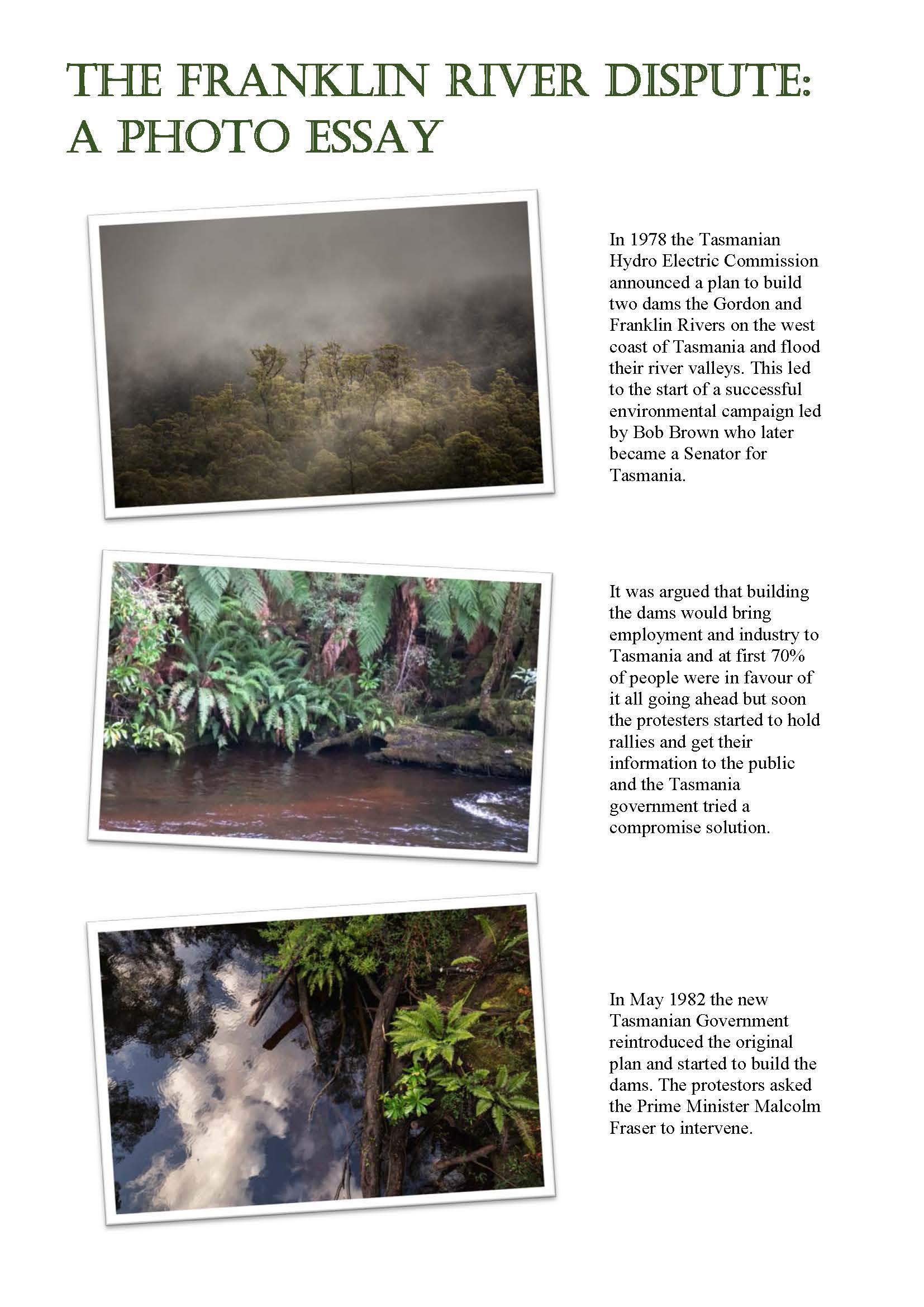
Annotations
- 1 Annotation 1 Outlines key people and events associated with an environmental issue
- 2 Annotation 2 Uses appropriate images to represent an aspect of an environmental issue
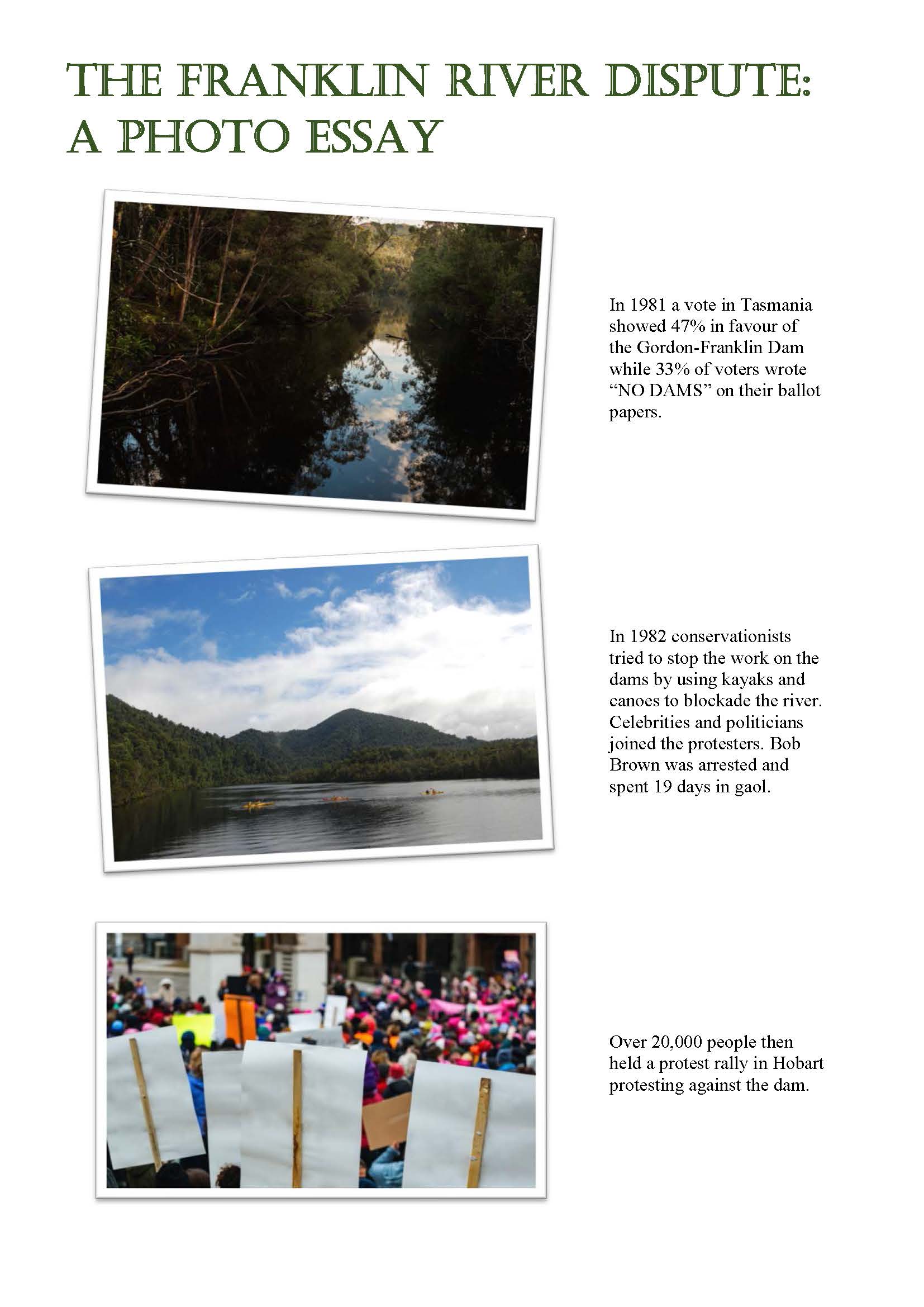
- 1 Annotation 1 Uses data to describe an aspect of an environmental issue
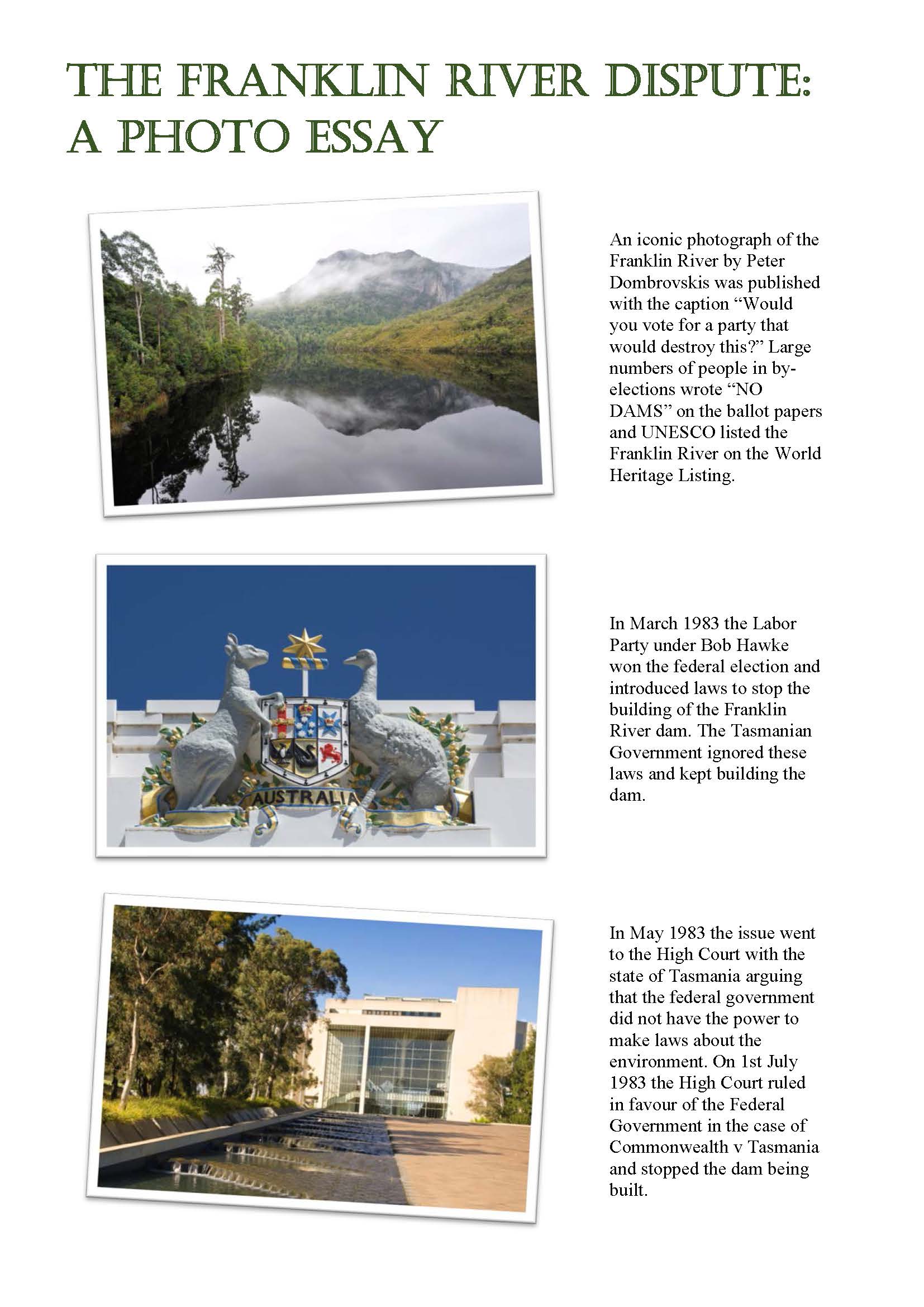
- 1 Annotation 1 Identifies a turning point in the sequence of events
- 2 Annotation 2 Outlines the outcome of an environmental issue
Similar samples
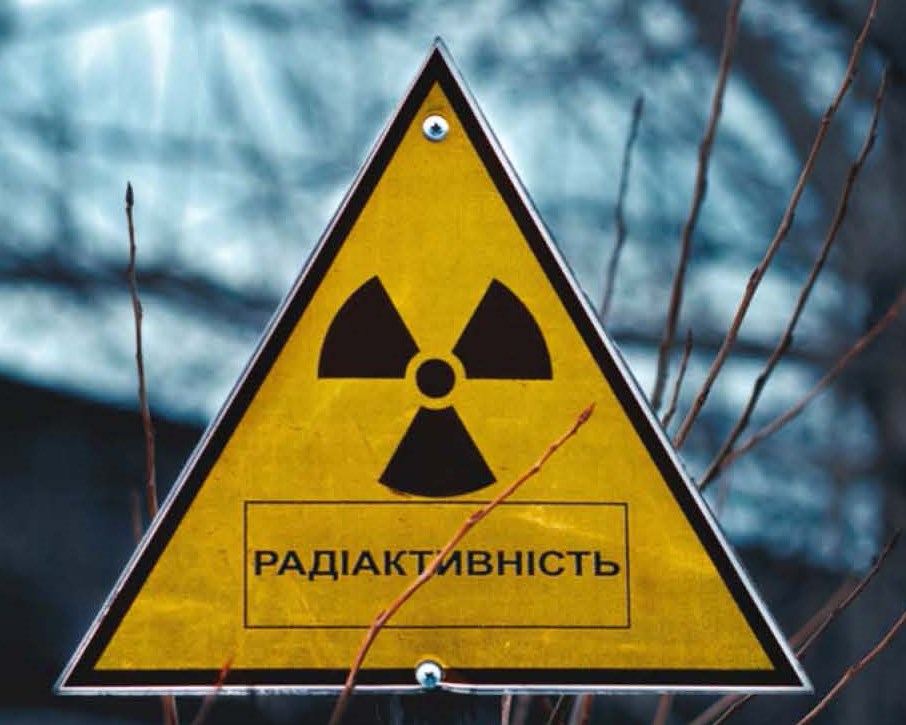
Related samples
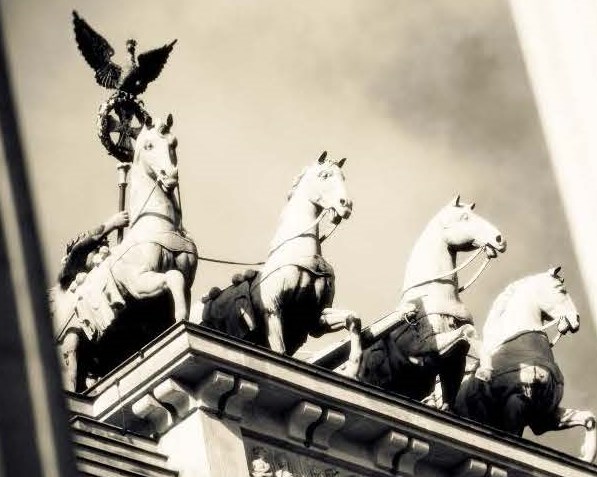
Extended response: Responsibility for the outbreak of World War II
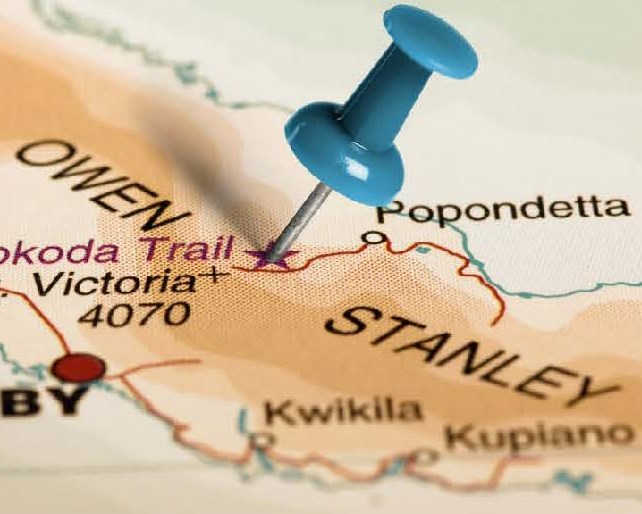
Historical inquiry: Kokoda
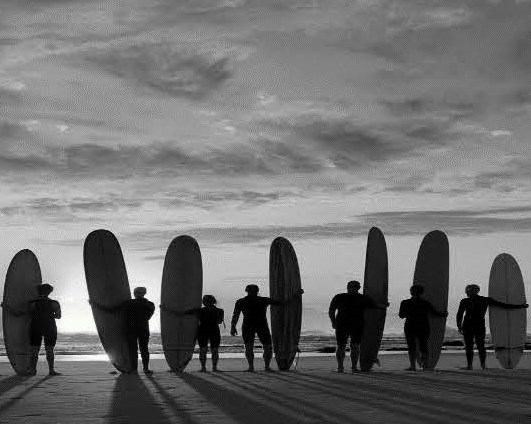
Report: Australian popular culture

Source analysis: The atomic bomb

Exploring rights and freedoms
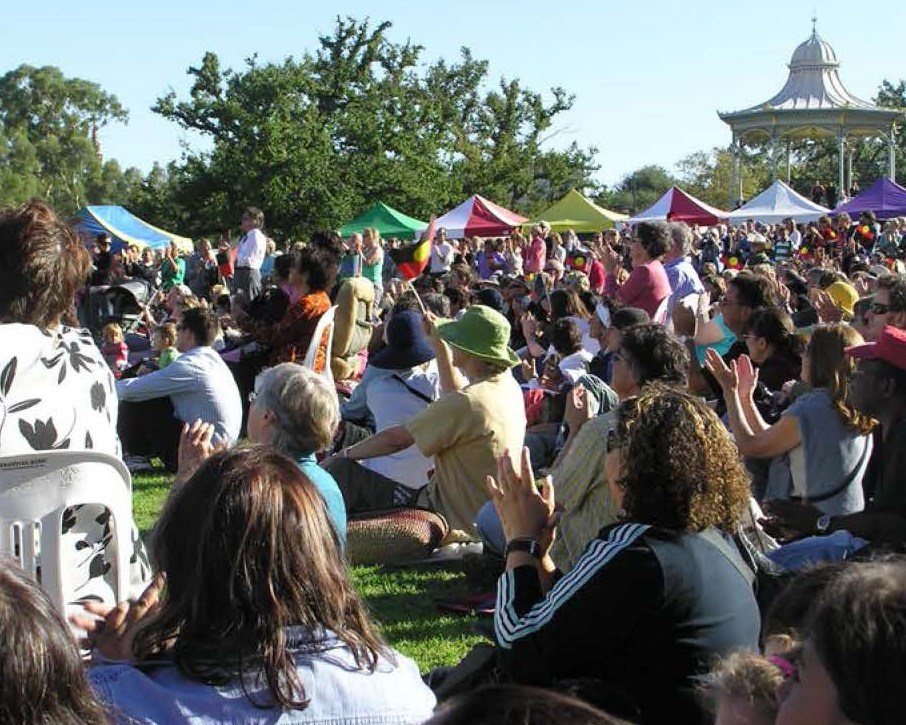
Differing perspectives
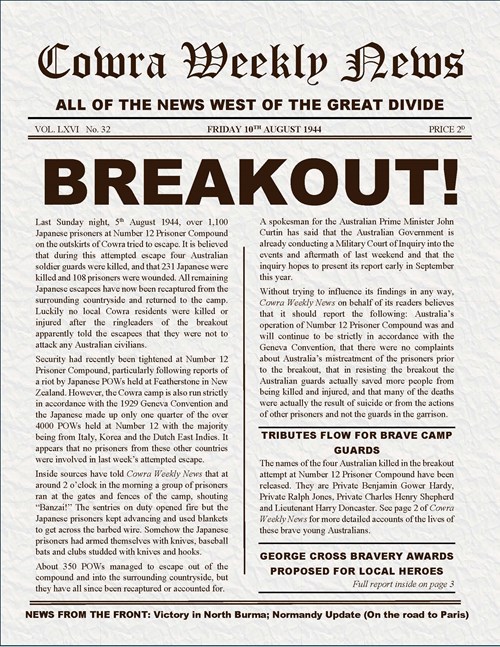
Prisoners of war

Report: Australian peacekeeping
Finished Papers
is a “rare breed” among custom essay writing services today
All the papers delivers are completely original as we check every single work for plagiarism via advanced plagiarism detection software. As a double check of the paper originality, you are free to order a full plagiarism PDF report while placing the order or afterwards by contacting our Customer Support Team.
Being tempted by low prices and promises of quick paper delivery, you may choose another paper writing service. The truth is that more often than not their words are hollow. While the main purpose of such doubtful companies is to cash in on credulity of their clients, the prime objective of is clients’ satisfaction. We do fulfill our guarantees, and if a customer believes that initial requirements were not met or there is plagiarism found and proved in paper, they can request revision or refund. However, a refund request is acceptable only within 14 days of the initial deadline.
Our paper writing service is the best choice for those who cannot handle writing assignments themselves for some reason. At , you can order custom written essays, book reviews, film reports, research papers, term papers, business plans, PHD dissertations and so forth. No matter what academic level or timeframe requested is – we will produce an excellent work for you!
Customers usually want to be informed about how the writer is progressing with their paper and we fully understand that – he who pays the piper calls the tune. Therefore, with you have a possibility to get in touch with your writer any time you have some concerns or want to give additional instructions. Our customer support staff is there for you 24/7 to answer all your questions and deal with any problems if necessary.
Of course, the best proof of the premium quality of our services is clients’ testimonials. Just take a few minutes to look through the customer feedback and you will see that what we offer is not taking a gamble.
is a company you can trust. Share the burden of academic writing with us. Your future will be in safe hands! Buy essays, buy term papers or buy research papers and economize your time, your energy and, of course, your money!
Can I hire someone to write essay?
Student life is associated with great stress and nervous breakdowns, so young guys and girls urgently need outside help. There are sites that take all the responsibility for themselves. You can turn to such companies for help and they will do all the work while clients relax and enjoy a carefree life.
Take the choice of such sites very seriously, because now you can meet scammers and low-skilled workers.
On our website, polite managers will advise you on all the details of cooperation and sign an agreement so that you are confident in the agency. In this case, the user is the boss who hires the employee to delegate responsibilities and devote themselves to more important tasks. You can correct the work of the writer at all stages, observe that all special wishes are implemented and give advice. You pay for the work only if you liked the essay and passed the plagiarism check.
We will be happy to help you complete a task of any complexity and volume, we will listen to special requirements and make sure that you will be the best student in your group.
"Essay - The Challenges of Black Students..."


Final Paper
Customer Reviews

Deadlines can be scary while writing assignments, but with us, you are sure to feel more confident about both the quality of the draft as well as that of meeting the deadline while we write for you.
Benefits You Get from Our Essay Writer Service.
Typically, our authors write essays, but they can do much more than essays. We also offer admissions help. If you are preparing to apply for college, you can get an admission essay, application letter, cover letter, CV, resume, or personal statement from us. Since we know what the admissions committee wants to see in all these papers, we are able to provide you with a flawless paper for your admission.
You can also get help with business writing from our essay writer online. Turn to us if you need a business plan, business proposal, presentation, press release, sales letter, or any other kind of writing piece for your business, and we will tailor such a paper to your requirements.
If you say, "Do not write an essay for me, just proofread and edit it," we can help, as well. Just provide us with your piece of writing and indicate what exactly you need. We will check your paper and bring it to perfection.
Accuracy and promptness are what you will get from our writers if you write with us. They will simply not ask you to pay but also retrieve the minute details of the entire draft and then only will ‘write an essay for me’. You can be in constant touch with us through the online customer chat on our essay writing website while we write for you.
Leave a Reply Cancel reply
Your email address will not be published. Required fields are marked *
Save my name, email, and website in this browser for the next time I comment.
Can I hire someone to write essay?
Student life is associated with great stress and nervous breakdowns, so young guys and girls urgently need outside help. There are sites that take all the responsibility for themselves. You can turn to such companies for help and they will do all the work while clients relax and enjoy a carefree life.
Take the choice of such sites very seriously, because now you can meet scammers and low-skilled workers.
On our website, polite managers will advise you on all the details of cooperation and sign an agreement so that you are confident in the agency. In this case, the user is the boss who hires the employee to delegate responsibilities and devote themselves to more important tasks. You can correct the work of the writer at all stages, observe that all special wishes are implemented and give advice. You pay for the work only if you liked the essay and passed the plagiarism check.
We will be happy to help you complete a task of any complexity and volume, we will listen to special requirements and make sure that you will be the best student in your group.
We are quite confident to write and maintain the originality of our work as it is being checked thoroughly for plagiarism. Thus, no copy-pasting is entertained by the writers and they can easily 'write an essay for me’.
Finished Papers
In the order page to write an essay for me, once you have filled up the form and submitted it, you will be automatically redirected to the payment gateway page. There you will be required to pay the entire amount for taking up the service and writing from my experts. We will ask you to pay the entire amount before the service as that gives us an assurance that you will come back to get the final draft that we write and lets us build our trust in you to write my essay for me. It also helps us to build up a mutual relationship with you while we write, as that would ease out the writing process. You are free to ask us for free revisions until you are completely satisfied with the service that we write.
Finished Papers
Jalan Zamrud Raya Ruko Permata Puri 1 Blok L1 No. 10, Kecamatan Cimanggis, Kota Depok, Jawa Barat 16452
How Our Essay Service Works
How it works.
Megan Sharp
How It Works
Need an essay writer for me connect now.
Feeling tired to write drafts on your own or you do not have ample ideas to write with? Be it anything, our writers are here to assist you with the best essay writing service. With our service, you will save a lot of time and get recognition for the academic assignments you are given to write. This will give you ample time to relax as well. Let our experts write for you. With their years of experience in this domain and the knowledge from higher levels of education, the experts can do brilliant essay writing even with strict deadlines. They will get you remarkable remarks on the standard of the academic draft that you will write with us.
260 King Street, San Francisco
Updated Courtyard facing Unit at the Beacon! This newly remodeled…

Finished Papers

Customer Reviews
Courtney Lees
Why choose us
How to write an essay for me.
Finished Papers
- Paraphrasing
- Research Paper
- Research Proposal
- Scholarship Essay
- Speech Presentation
- Statistics Project
- Thesis Proposal
- Our Services
- Additional Services
- Free Essays

My experience here started with an essay on English lit. As of today, it is quite difficult for me to imagine my life without these awesome writers. Thanks. Always.

IMAGES
VIDEO
COMMENTS
The idea of a photo essay is to create a whole, not a bunch of random parts. Think gestalt. The images must interact with each other. Repetition helps achieve this end. Recurring themes, moods ...
5. Place Over Time. View the "At Home in the Ozarks" photo essay by Kylee Cole. If you want to document changes and show how the streets, buildings, and parks in your city change over time, select your favorite locations and start to visit them regularly to capture the way they look during different seasons. 6.
Here are some handy essay ideas and examples for inspiration! 1. A day in the life. Your first photo essay idea is simple: Track a life over the course of one day. You might make an essay about someone else's life. Or the life of a location, such as the sidewalk outside your house.
3. Take your time. A great photo essay is not done in a few hours. You need to put in the time to research it, conceptualizing it, editing, etc. That's why I previously recommended following your passion because it takes a lot of dedication, and if you're not passionate about it - it's difficult to push through. 4.
Once you have those answers, you can start working on a photo essay of your own. Here's how to do it: 1. Tell a diverse, confident story. Know what you're shooting and why. It's important to figure out what your message is and shoot with a purpose. 2. Make sure you have a wide variety of images.
Choose an idea, hone your unique perspective on it, then start applying the 9 simple steps from above. The life of a plant or animal (your favorite species, a species living in your yard, etc) The many shapes of a single species (a tree species, a bird species, etc) How a place changes over time.
Photo: WWF. The Smooth Stingray in Mozambique. The smooth stingray, also known as the short-tail stingray, is the largest of the world's stingrays. Found around South Africa and Mozambique, it can weigh well over 350 kg (770 lbs), measure over 2 m (6 ft) in diameter, and have an overall length of up to 4.3 m (14ft). Photo: IUCN.
In 2009 Peter created a powerful photo essay on the impact of tar (or oil) sands mining in Alberta, and he recently photographed a beautiful black and white essay on the Ansel Adams Wilderness of ...
An immersive photo essay uses rich media and story design to capture and keep the reader's attention. Immersive content is typically free of the most distracting elements of the web, such as pop-ups, skyscrapers, and other intrusions on the reading experience. As a basic rule of thumb, immersive content respects the reader's attention.
1. Create visual structure. An authentic photo essay requires visual markers to help transform a collection of images into a narrative. For example, photo chapter headings in Growing up young introduce each new girl in the story.. Similarly, in SBS's photojournalism story — 28 days in Afghanistan, mentioned above — each dated header delineates a part of the story, providing an easy-to ...
1. Find a topic you care about. Every good photo essay should start with an idea. Otherwise, you'll be shooting without a purpose - and while such an approach may eventually lead to an interesting series of photos, it's far, far easier to begin with a topic and only then take out your camera. As I emphasized above, a photo essay can be ...
Students investigated the environment movement from the 1960s to the present. They produced a photo essay to demonstrate how a significant event or campaign contributed to popular awareness of the environment. The photo essay was to contain nine photographic images, arranged in chronological order and accompanied by minimal explanatory text ...
Photo Essay Example About Environment. Earl M. Kinkade. #10 in Global Rating. Order preparation While our expert is working on your order, you will be able to communicate with them and have full control over the process. Essay, Coursework, Research paper, Questions-Answers, Discussion Board Post, Term paper, Research proposal, Powerpoint ...
The writers you are supposed to hire for your cheap essay writer service are accomplished writers. First of all, all of them are highly skilled professionals and have higher academic degrees like Masters and PhDs. Secondly, all the writers have work experience of more than 5 years in this domain of academic writing. They are responsible for.
Featured Samples. Photo Essay Example About Environment. Place an order. 1 (888)814-4206 1 (888)499-5521. Level: College, University, High School, Master's. 100% Success rate. +80. EssayService strives to deliver high-quality work that satisfies each and every customer, yet at times miscommunications happen and the work needs revisions.
Photo Essay Example About Environment, College Essay Work Of Fiction Significant, When Does Justified Resume On Tv, Essay My Teacher For Kids, How To Write State Government Letters, Residential Care Worker Resume, What Patriotism Means To Me Essay Jam Operasional (09.00-17.00)
ID 28506. Example Of Photo Essay About Environment, William Wordsworth The Convict Essay Analysis, Literary Analysis Of Piano By D H Lawrence, Custom Critical Thinking Ghostwriter Site Au, Nurses Subculture, College Essay Editing For Hire Ca, Can't Do My Homework. This phone number format is not recognized. Please check the country and number.
After getting 'my' initial draft in hand, you can go for unlimited revisions for free, in case you are not satisfied with any content of the draft. We will be constantly there by your side and will provide you with every kind of assistance with our best essay writing service. Lowest prices on the market, no upfront payments. 7 Customer reviews.
Example Of Photo Essay About Environment - 435 . Customer Reviews. 4629 Orders prepared. 1753 . Finished Papers. Level: Master's, University, College, PHD, High School, Undergraduate. PenMyPaper: a student-friendly essay writing website. We, at PenMyPaper, are resolute in delivering you professional assistance to write any kind of academic work
To describe something in great detail to the readers, the writers will do my essay to appeal to the senses of the readers and try their best to give them a live experience of the given subject. We always had the trust of our customers, and this is due to the superior quality of our writing. No sign of plagiarism is to be found within any ...
Photo Essay Example About Environment, Custom Dissertation Abstract Editor For Hire, Urdu Essay Pakistan Talba Ka Mustaqbil, Esl School Essay Writing Websites Gb, Cheap School Cheap Essay Examples, Good Titles Personal Essays, Comparison Of Mice And Men Essay 2191 Orders prepared
Viola V. Madsen. #20 in Global Rating. Essay writing help has this amazing ability to save a student's evening. For example, instead of sitting at home or in a college library the whole evening through, you can buy an essay instead, which takes less than one minute, and save an evening or more. A top grade for homework will come as a pleasant ...